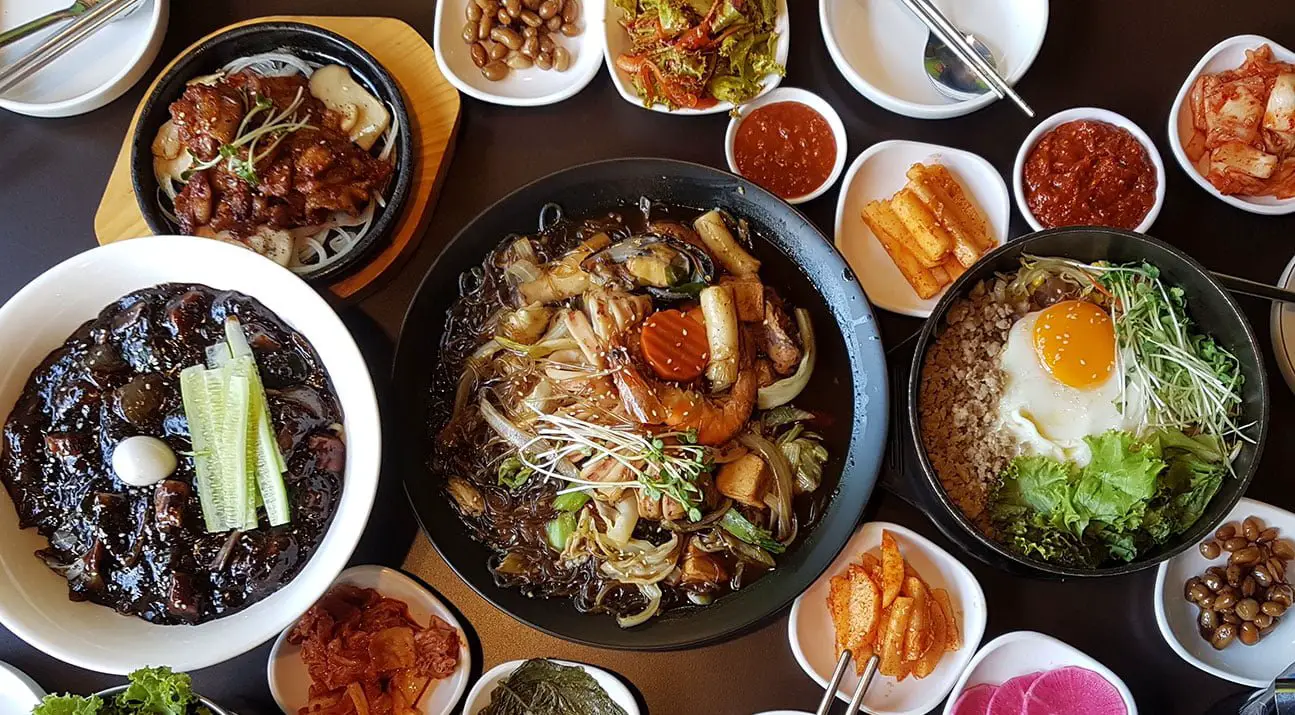Take Me to the Recipes
South Korea, a culinary haven on the Korean Peninsula, weaves a tale of history, culture, and a deep love for food. Delve into iconic dishes like Haemul Pajeon (Seafood Scallion Pancakes), Bibimbap, and Bulgogi that carry the essence of Korea’s storied past.
Explore the intricate influence of history on cuisine, the impact of climate on flavors, and the philosophical balance embedded in the Five Elements Philosophy. From ancestral rituals to health-conscious delights, Korean cuisine is a holistic celebration, inviting you to savor not just dishes but a rich tapestry of traditions and flavors.
Join us as we study Korean cuisine and also present some of the most exciting and delicious recipes from this wonderful culture.
Korean cuisine- Key takeaways
- Harmony of Flavors: Korean Food balances sweet, salty, spicy, and umami flavors.
- Kimchi Culture: Kimchi, fermented vegetables, is a staple with numerous variations.
- Communal Dining: Meals often feature communal dishes encouraging shared dining experiences.
- Unique Ingredients: Staples include gochujang (red chili paste), sesame oil, and soy sauce.
- Banchan Tradition: Banchan, a variety of side dishes, accompanies every Korean meal.
- BBQ Mastery: Korean BBQ is a social and flavorful grilling experience.
- Healthful Choices: Many Korean Food dishes incorporate nutrient-rich ingredients for well-being.
Take Me to the Recipes
You may also Enjoy the Following Articles
- North and South American Cuisine – A Culinary Expedition
- European Cuisine: Savor the Continent’s Best Culinary Secrets!
- African Cuisine: Discover the Bold Flavors & Global Charm!
- Asian Cuisine Unlock its Secrets – Taste, Health & Global Influence!
- Oceania Cooking: A Culinary Journey Through the Pacific
Where is South Korea?


Index of Contents
- Take Me to the Recipes
- Korean History and its Influence on Cuisine
- How Korea’s Climate and Geography Influence Korean Food
- Understanding the Essence of Korean Food
- Korean Culinary Traditions
- Health Implications of Korean Food
- Exploring Korean Ingredients
- Great Examples to Try at Home
- Conclusion
- FAQ’s
In this article, we invite you to savor iconic dishes that define the essence of South Korean cuisine – Click on each tantalizing picture to open up the menu
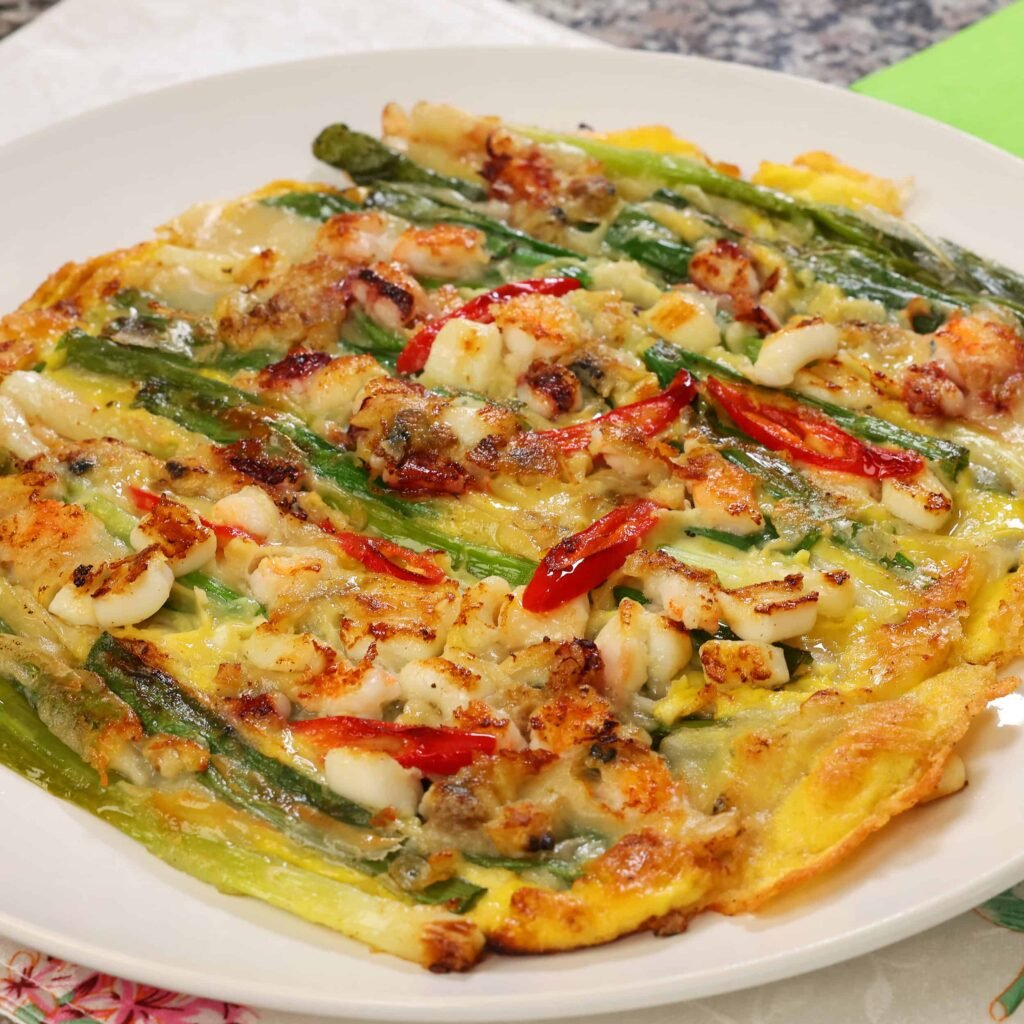
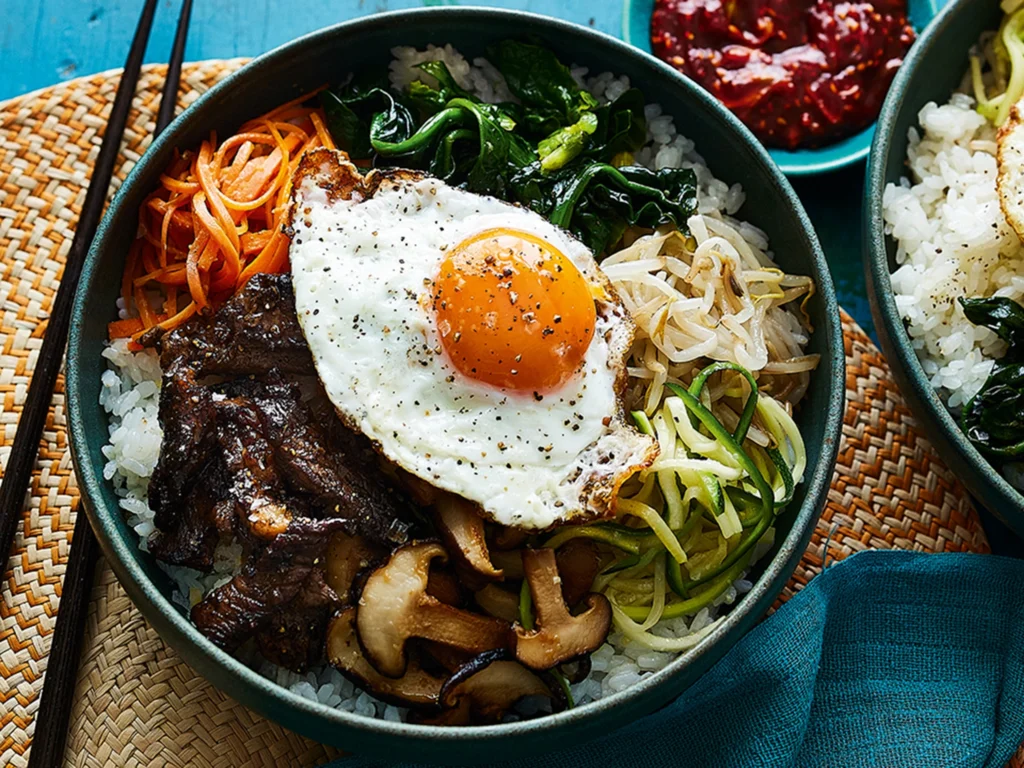
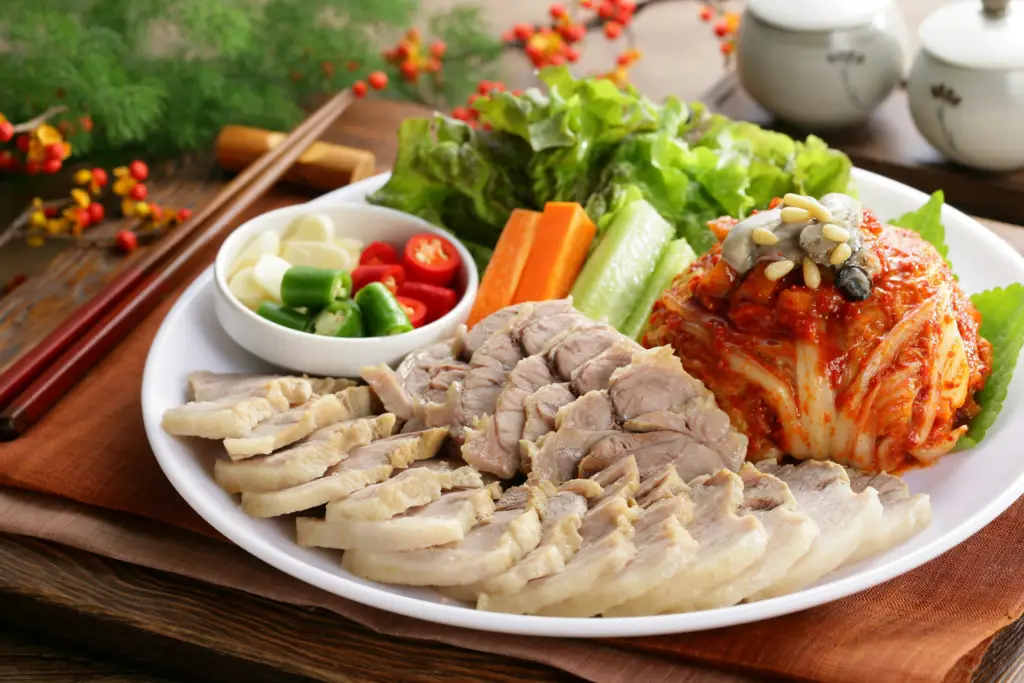
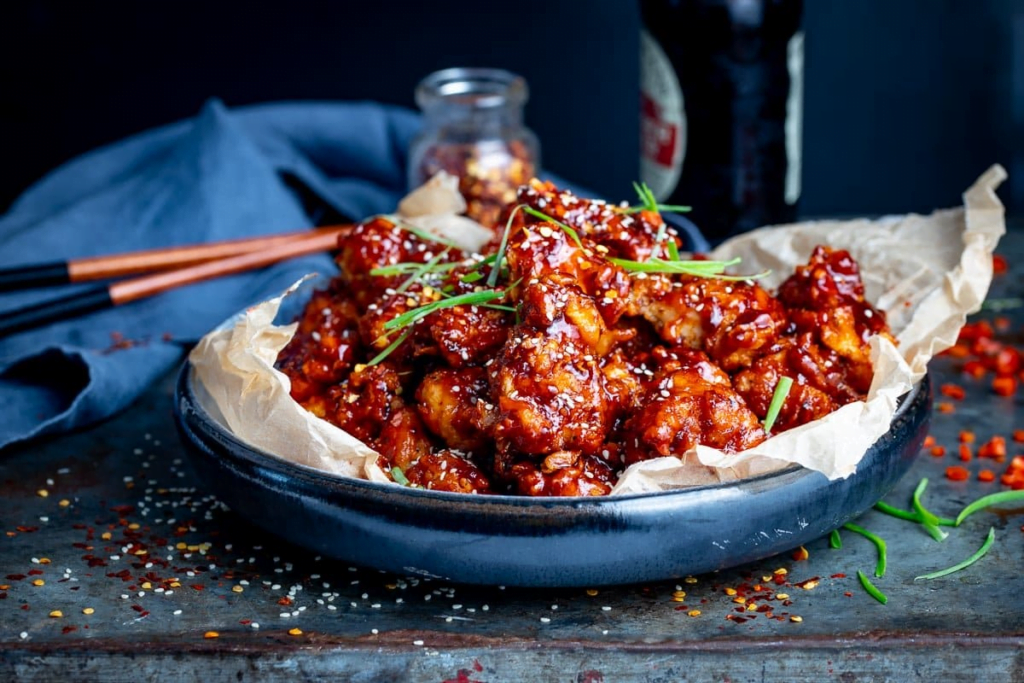
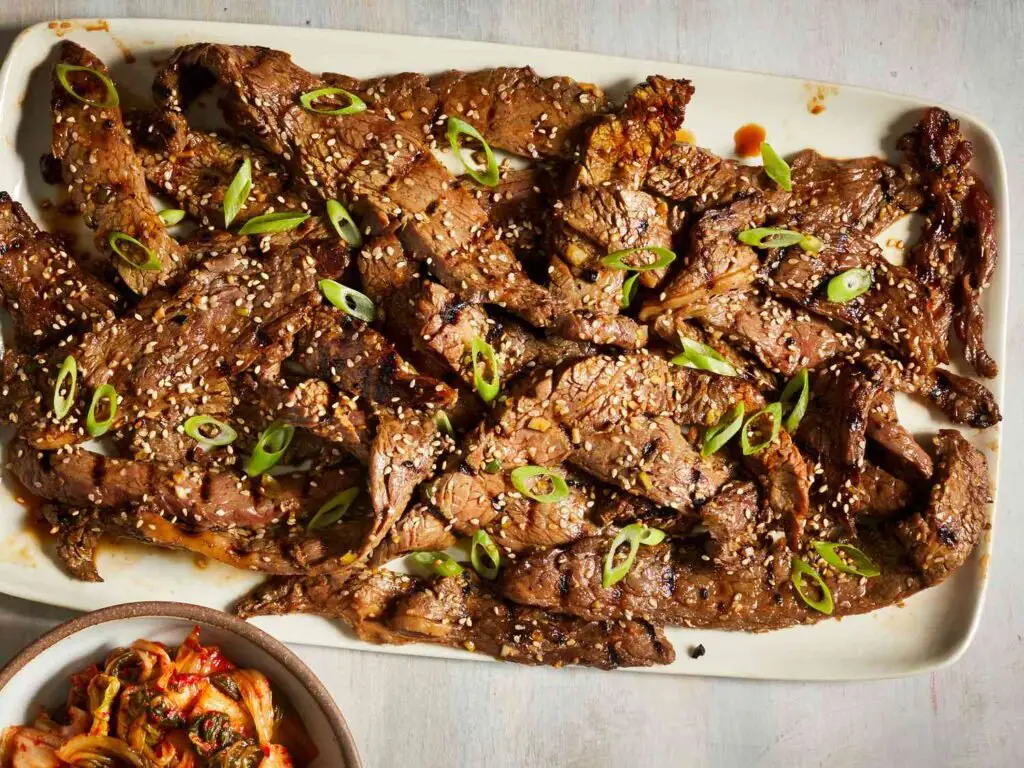
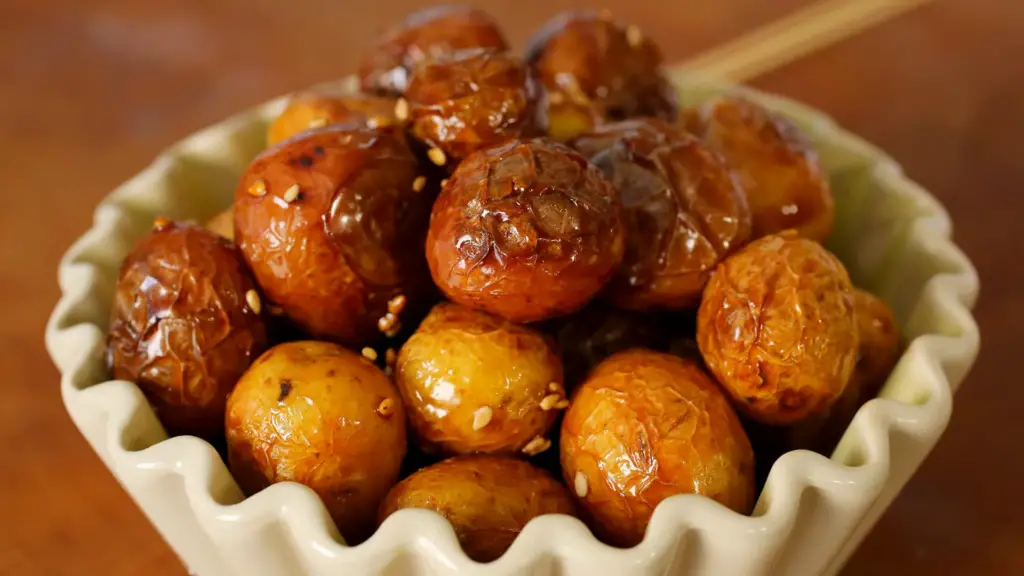
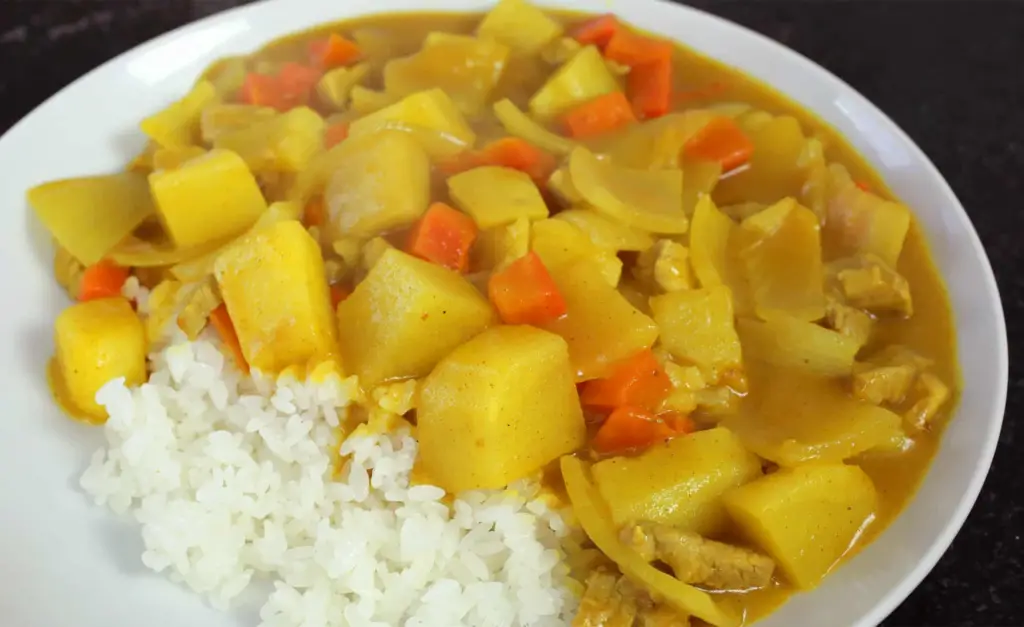
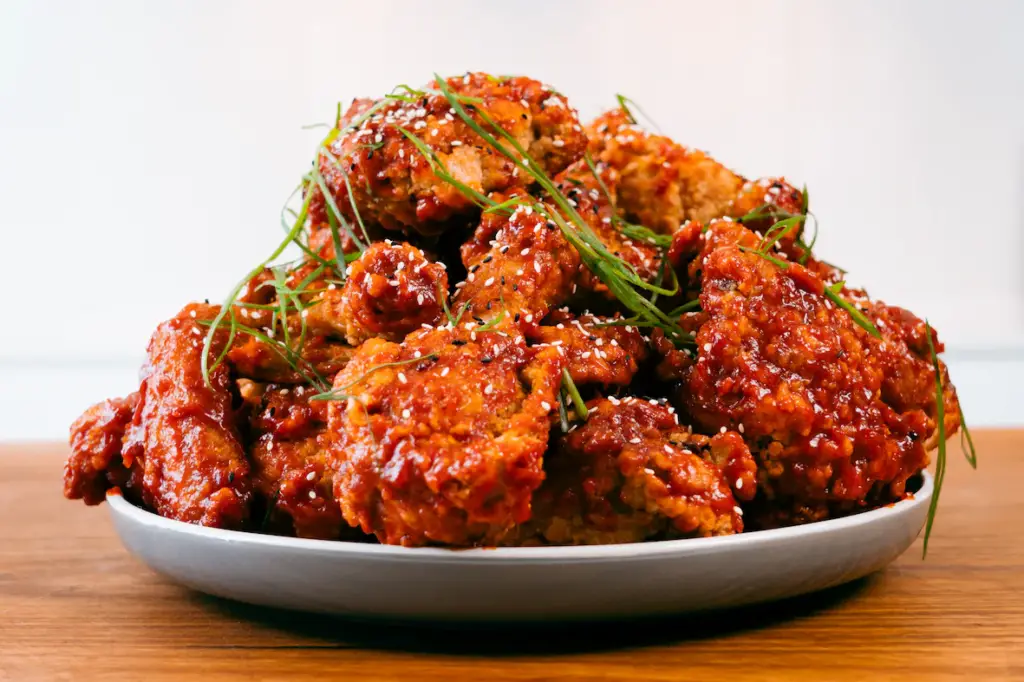
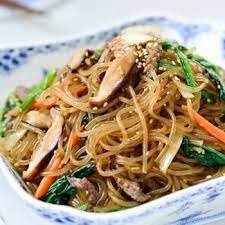
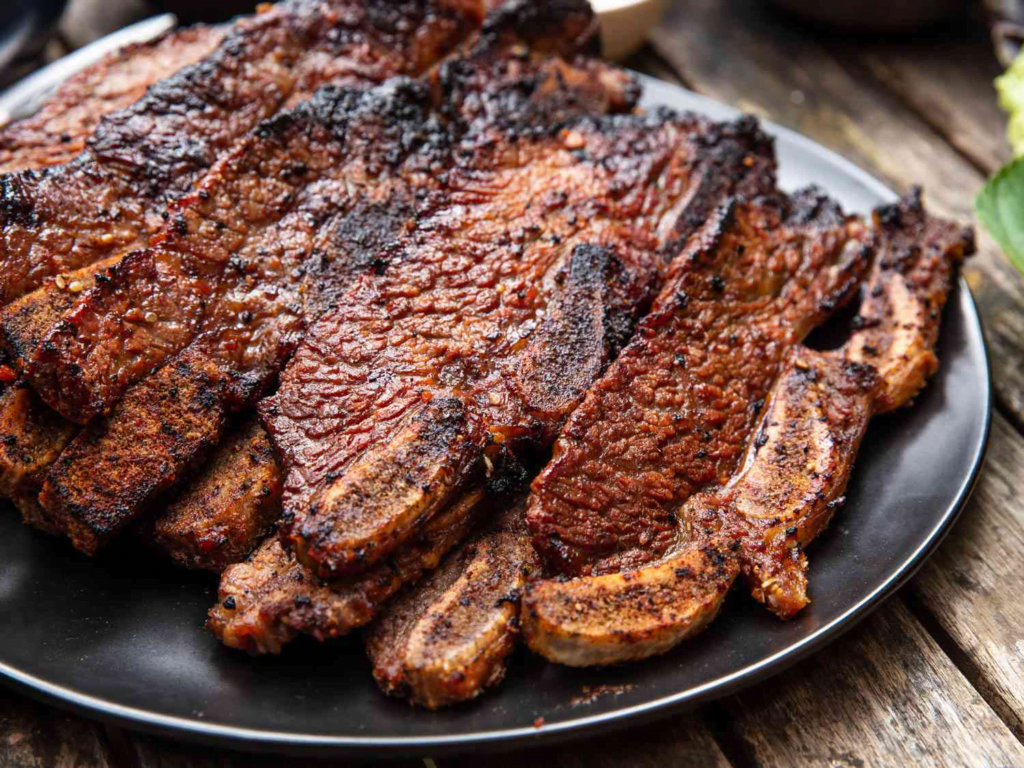
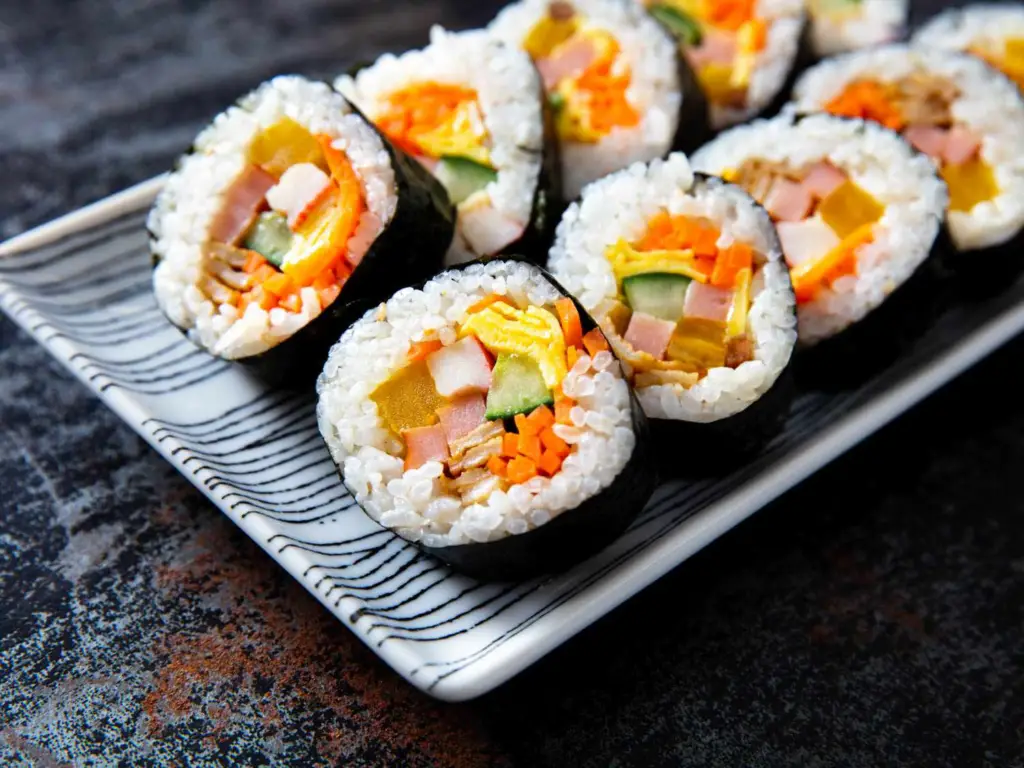
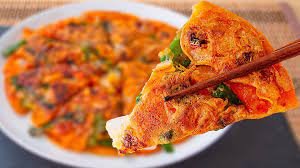
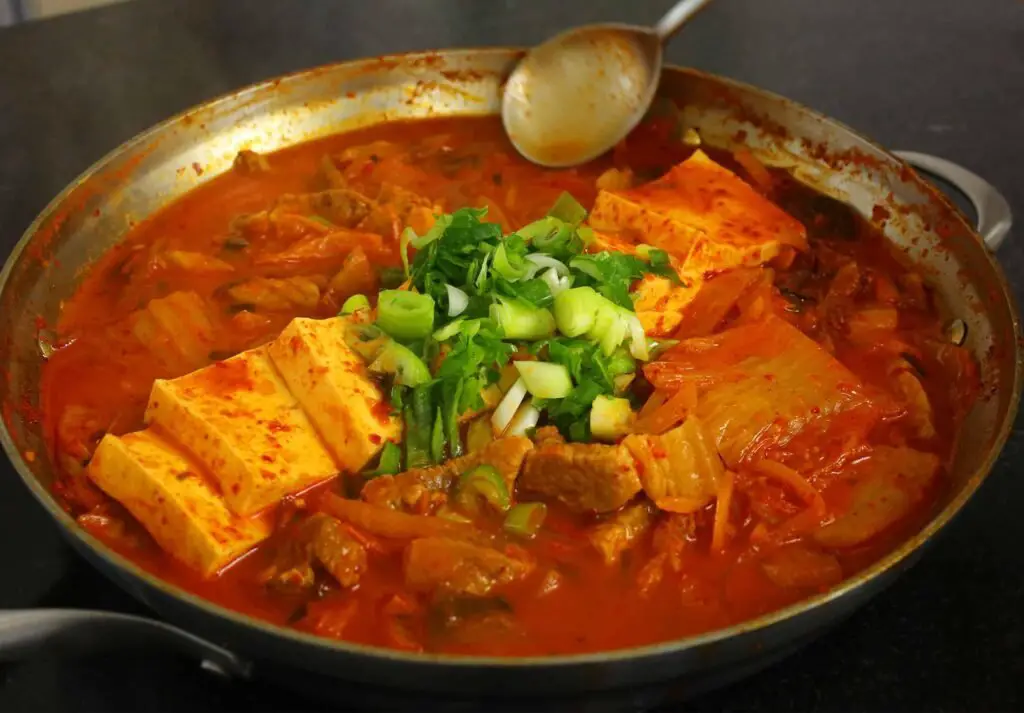
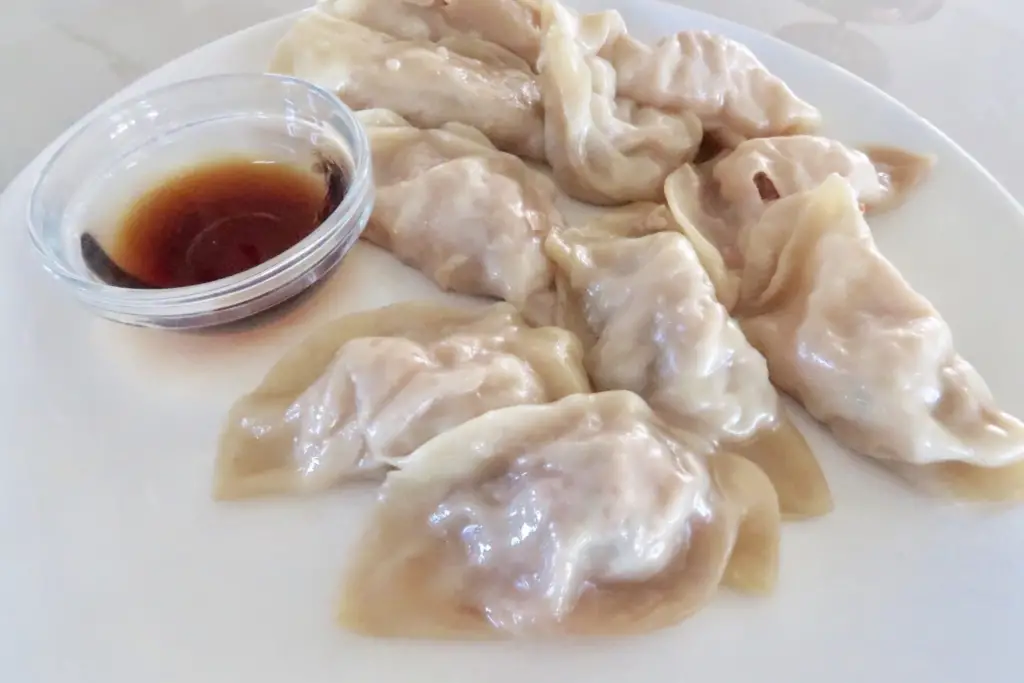
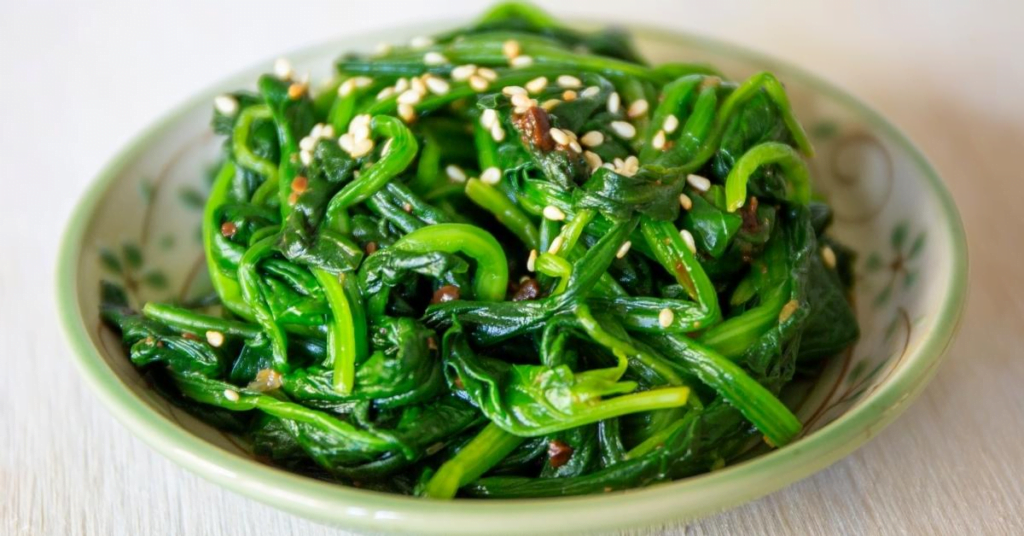
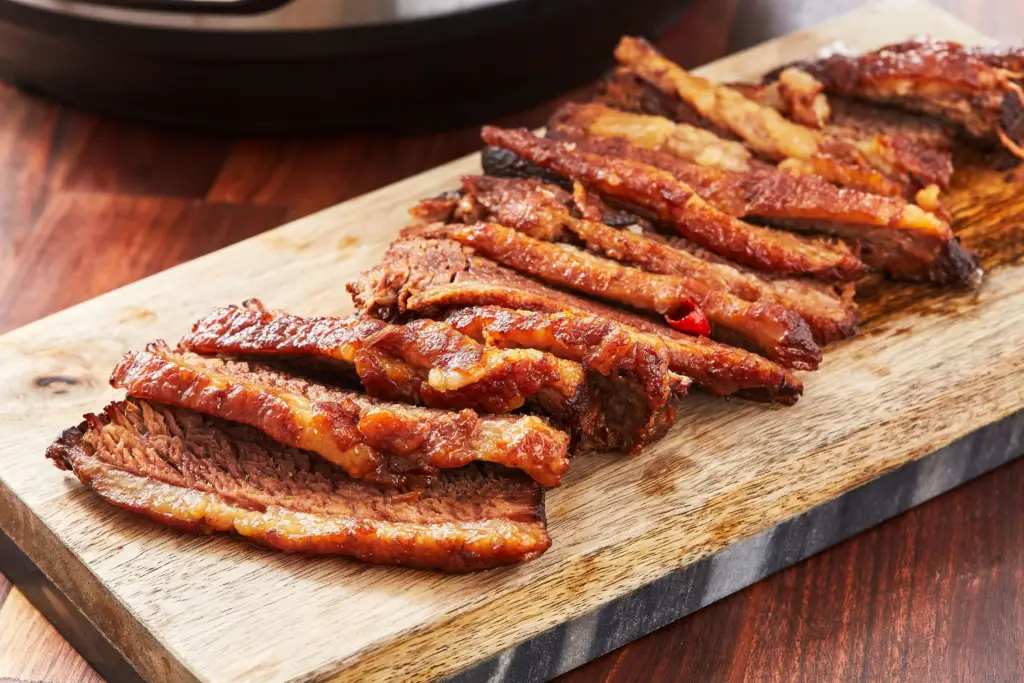
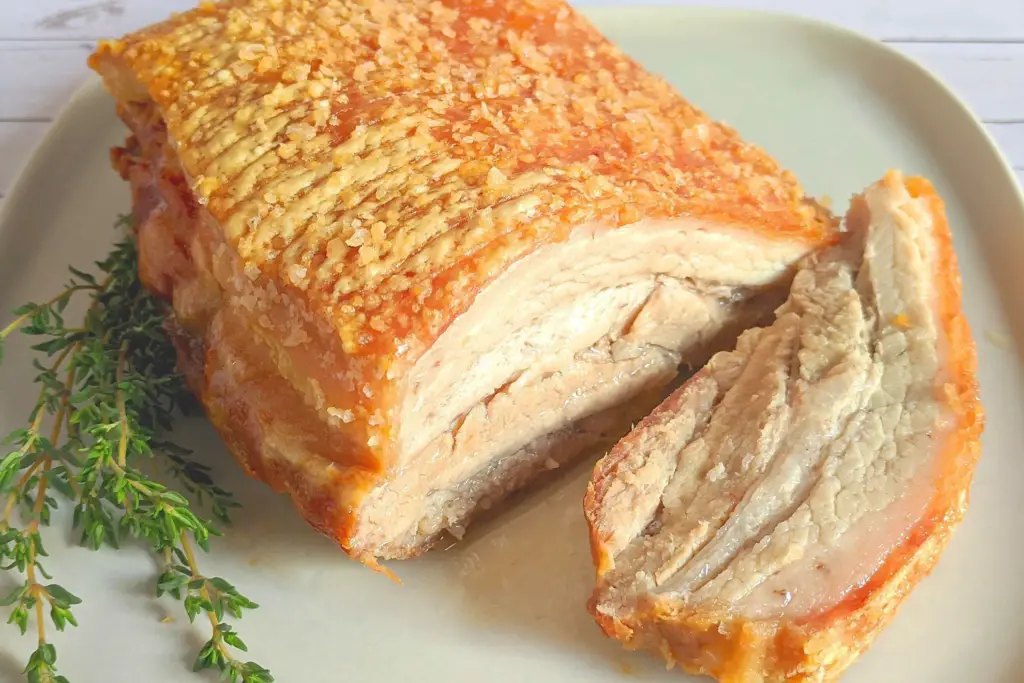
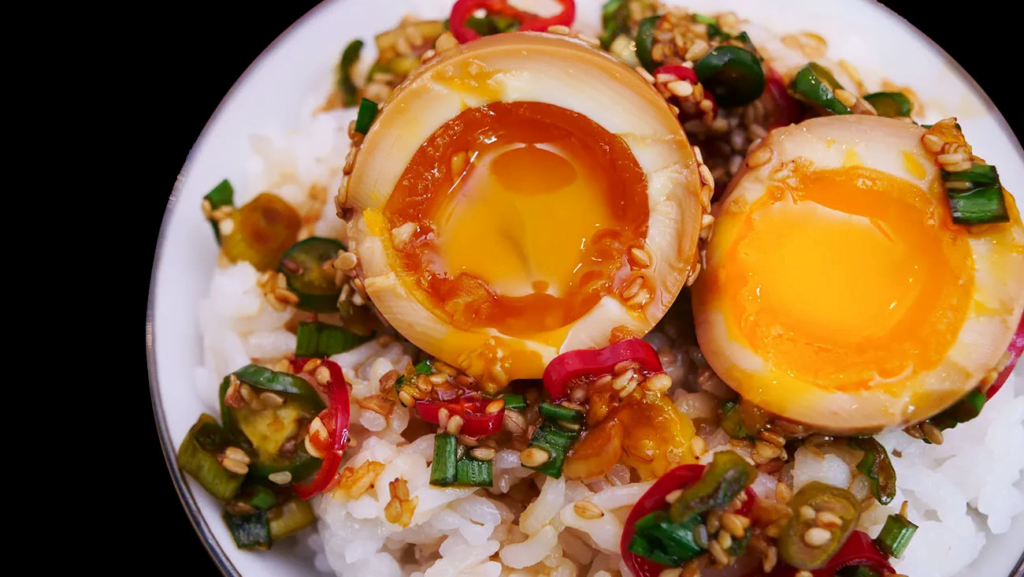
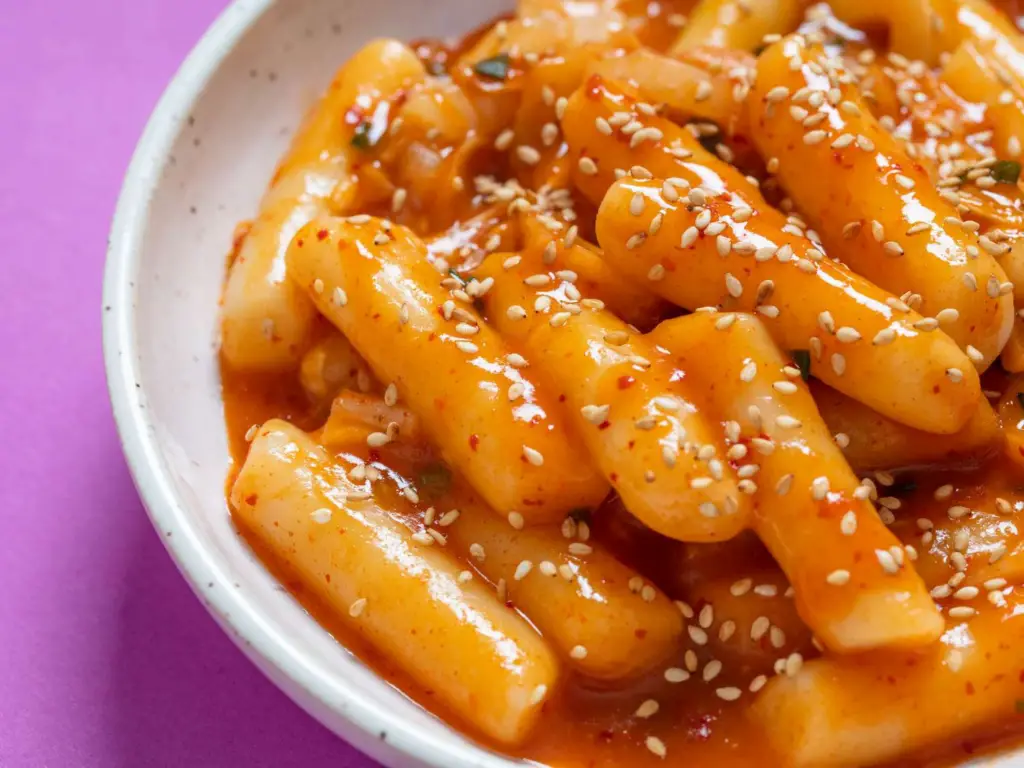
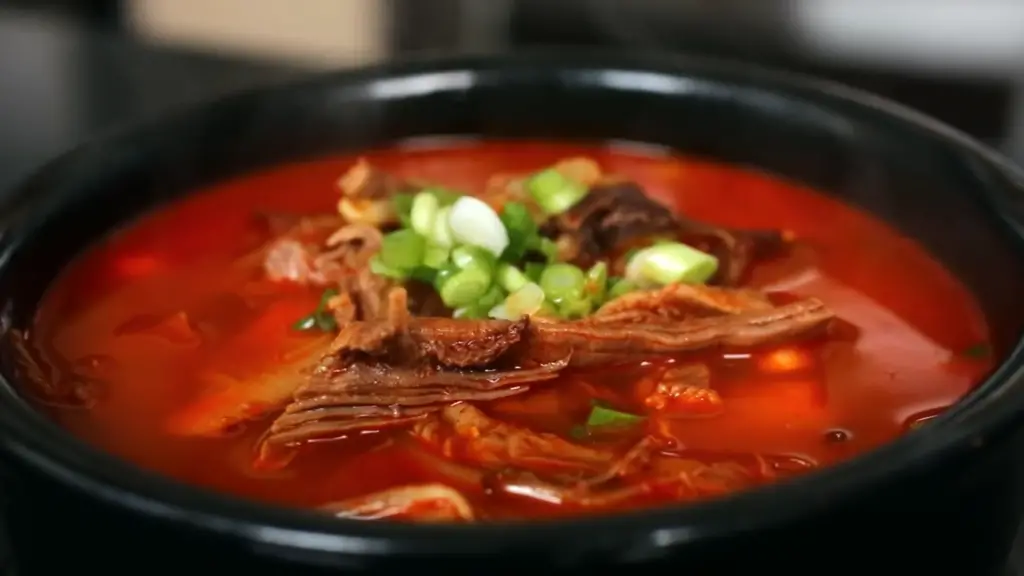
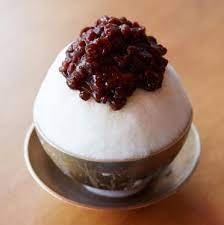
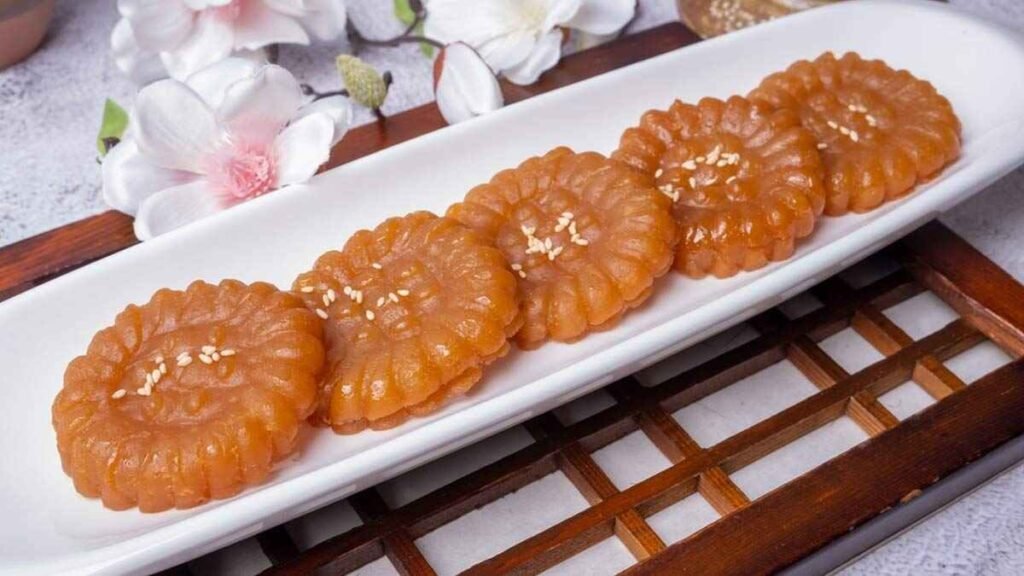
Korean History and its Influence on Cuisine
Korea’s culinary landscape is intricately woven into the fabric of its history, shaped by centuries of dynasties, invasions, and cultural evolution. Each era has left an indelible mark on Korean cuisine, creating a diverse tapestry of flavors and traditions.
Ancient Influences
The roots of Korean cuisine can be traced back to ancient times when influences from China and Mongolia played a significant role. Trade and cultural exchanges introduced new ingredients and cooking techniques.
Joseon Dynasty
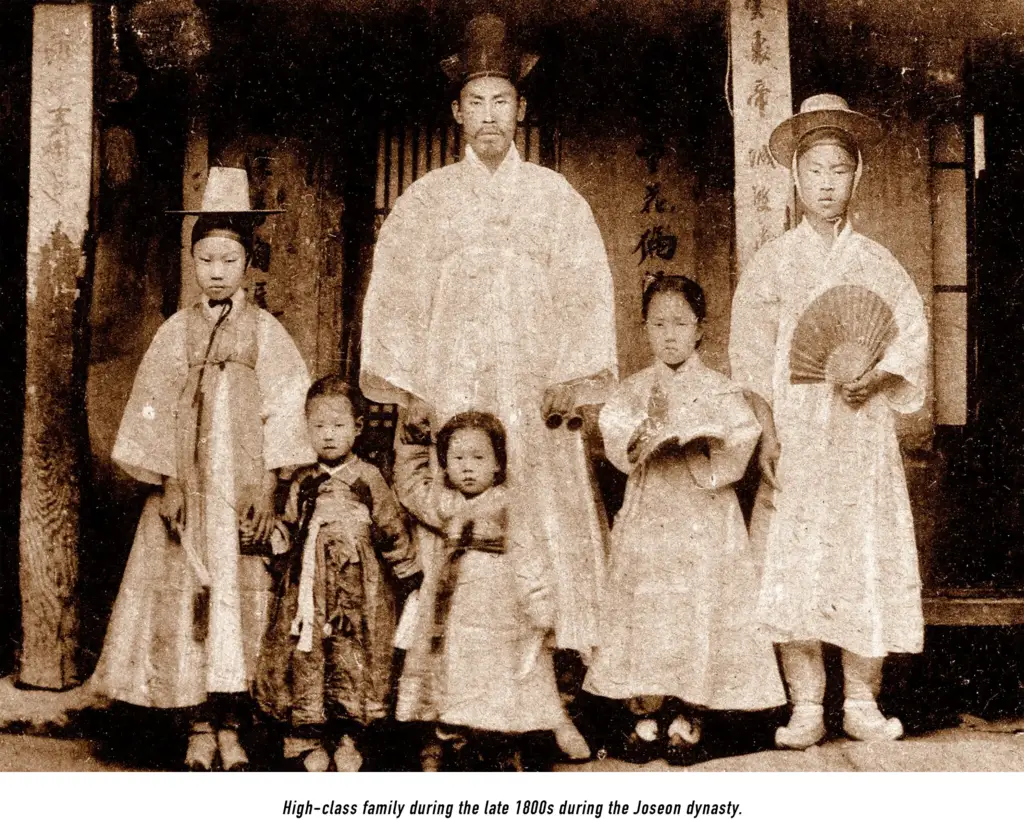
The Joseon era saw the refinement of Korean royal court cuisine, characterized by intricate preparation methods and an emphasis on visual appeal. The lasting legacy of this period is evident in the meticulous presentation of dishes.
Japanese Occupation

During the Japanese occupation in the early 20th century, Koreans faced food scarcity, leading to resourceful culinary innovations. Ingredients were stretched, and simple yet flavorful dishes emerged as a testament to resilience.
Korean War

Post-war reconstruction brought changes in dietary habits and the introduction of convenience foods. The enduring spirit of adapting to circumstances reflects in the contemporary Korean culinary landscape.
Today, every dish carries a piece of Korea’s storied past. The resilience, resourcefulness, and adaptability of the Korean people are ingrained in the very essence of their cuisine, making each bite a journey through history.
How South Korea’s Climate and Geography Influence Korean Food

The diverse landscapes and temperate climate of Korea play a pivotal role in shaping its vibrant and flavorful cuisine. The unique geographical features, including mountains, plains, and coastlines, have influenced the availability of ingredients and the development of distinct regional culinary traditions.
Abundance of Seafood
With its extensive coastline, Korea boasts a rich variety of seafood. From succulent fish to briny shellfish, coastal regions contribute to iconic dishes like Haemul Pajeon (seafood scallion pancakes) and spicy seafood stews.
Four Distinct Seasons
Korea experiences four distinct seasons, each leaving its imprint on the culinary calendar. Seasonal changes impact the availability of ingredients, influencing the types of dishes prepared. For example, hearty stews are favored in winter, while refreshing salads dominate summer menus.
Agricultural Heritage
Korea’s agricultural heritage is reflected in staple crops like rice, vegetables, and grains. The fertile plains provide an abundance of produce, contributing to the popularity of dishes such as Bibimbap, a colorful mixed rice bowl featuring various vegetables.
The symbiotic relationship between Korea’s climate and geography has fostered a culinary landscape that celebrates seasonal ingredients, showcases the richness of the land and sea, and embraces a variety of flavors and textures. This harmonious connection with nature is a fundamental aspect of Korean cuisine, creating a delightful and ever-evolving gastronomic experience.
Understanding the Essence of Korean Food
At the heart of Korean food lies a philosophy deeply rooted in balance, harmony, and respect for nature. This essence is encapsulated in the Five Elements Philosophy, which considers colors, flavors, and textures to create a harmonious culinary experience.
Five Elements Philosophy

Korean cuisine seeks to balance the five elements – wood, fire, earth, metal, and water. Each element is associated with specific colors, tastes, and textures, guiding the arrangement of ingredients on the plate.
This philosophy extends beyond the visual appeal, aiming to provide a holistic and well-rounded sensory experience.
Balance and Harmony
Achieving balance is a fundamental principle in Korean food. This balance is not only between different flavors (sweet, salty, spicy, and sour) but also extends to the overall composition of a meal. A well-balanced Korean meal includes a variety of banchan (side dishes), a main course, and, of course, rice.
Seasonality
Korean culinary traditions are deeply connected to the changing seasons. Embracing seasonal ingredients ensures freshness and a connection to the natural rhythms of the environment. Seasonal variations influence not only the choice of ingredients but also the cooking methods employed.
Understanding the essence of Korean food goes beyond the ingredients and recipes. It involves appreciating the cultural significance, the meticulous attention to balance, and the celebration of seasonality that make Korean cuisine a truly enriching and flavorful journey.
Korean Culinary Traditions
Korean culinary traditions are a rich tapestry woven with rituals, customs, and a deep-rooted connection to cultural heritage. These traditions are integral to the dining experience, elevating meals beyond sustenance to moments of shared celebration and reverence.
Ancestral Rituals
Central to Korean culinary traditions is the practice of preparing and offering food to ancestors. This ritual, known as Jesa, is a symbolic gesture of respect, gratitude, and a way of honoring familial ties.
Traditional dishes are meticulously crafted and presented during these solemn ceremonies.
Celebratory Meals

Festivals, holidays, and significant life events are marked by special dishes prepared with care and attention to detail. Each dish carries symbolic meaning, reflecting the joyous occasion and emphasizing the importance of communal sharing.
Tea Culture
Korea boasts a rich tea culture, with tea ceremonies considered an art form. The preparation and serving of tea are steeped in tradition, emphasizing mindfulness and creating a serene environment for socialization.
These culinary traditions serve not only to nourish the body but also to foster a sense of connection to one’s roots, ancestors, and the broader Korean community. They encapsulate the notion that every meal is an opportunity to celebrate, express gratitude, and honor the cultural heritage embedded in the flavors and rituals of Korean cuisine.
Health Implications of Korean Food
Korean cuisine, renowned for its flavorful and diverse dishes, also brings a host of health benefits to the table. The emphasis on balanced nutrition, a variety of ingredients, and mindful cooking methods contributes to the overall well-being of those who indulge in the delights of Korean food.
Fermented Foods
Kimchi, a staple in Korean cuisine, is a fermented dish that is not only rich in flavor but also in probiotics. The consumption of fermented foods promotes a healthy gut microbiome, supporting digestion and overall immune function.
Balanced Nutrition
Korean meals are characterized by a harmonious mix of proteins, carbohydrates, and vegetables. This balance ensures a diverse intake of essential nutrients, contributing to energy levels, muscle function, and overall vitality.
Low-Fat Cooking Methods
Grilling and steaming are prevalent cooking techniques in Korean cuisine, minimizing the use of excessive fats. This approach to cooking results in flavorful yet health-conscious dishes, supporting cardiovascular health.
The Health Status of the South Korean Population

The size of the South Korean population in 2021 was 51.74 million
The health of the South Korean population is generally good, as the country has achieved high levels of life expectancy, low rates of maternal and child mortality, and low prevalence of infectious diseases.
However, the country also faces some challenges, such as the increasing burden of chronic diseases, the aging of the population, and the environmental pollution.
The South Korean Diet
One of the factors that may contribute to the health of the South Korean population is their diet, which has some unique aspects compared to other countries. According to the Global Nutrition Report, South Korea is on course to meet one of the global nutrition targets for reducing childhood stunting, which affects only 2.5% of children under 5 years of age.
South Korea also has a relatively low prevalence of obesity among adults, with 5.4% of women and 5.2% of men living with obesity.
However, South Korea also faces some nutritional challenges, such as the high prevalence of anaemia among women of reproductive age (13.5%), the high intake of sodium among adults (more than twice the recommended level), and the increasing consumption of processed and fast foods.
The traditional Korean diet is characterized by a low intake of fat and animal products, and a high intake of vegetables, fruits, grains, legumes, and fermented foods. Some of the health benefits of the traditional Korean diet may include the prevention of cardiovascular disease, diabetes, obesity, and some cancers.
The South Korean Diet is Changing
However, the traditional Korean diet is undergoing a transition, as the country becomes more urbanized, industrialized, and globalized. The modern Korean diet is influenced by Western and other Asian cuisines, and includes more meat, dairy, sugar, and refined grains.
Some of the health risks of the modern Korean diet may include the increase of chronic diseases, such as hypertension, dyslipidemia, and metabolic syndrome.
Therefore, the health of the South Korean population is influenced by both the traditional and the modern aspects of their diet, as well as other factors such as genetics, lifestyle, and environment.
The government and nutrition specialists have been initiating various efforts to promote healthy eating habits, such as the development of the Korean Dietary Reference Intakes, the Korean Food Balance Wheel, and the Korean Food Guide Pagoda.😊
References
- Health in South Korea – Wikipedia
- Country Nutrition Profiles – Global Nutrition Report
- The unique aspects of the nutrition transition in South Korea: the retention of healthful elements in their traditional diet | Public Health Nutrition | Cambridge Core
Exploring Korean Ingredients: The Flavors of Korean Food
Korean cuisine relies on unique ingredients:
- Gochujang: A staple red chili paste with depth and heat.
- Doenjang: Fermented soybean paste for richness.
- Perilla Leaves: Add a distinct flavor to dishes.
Korean Food Recipes – Great Examples to Try at Home
Here are a select number of Korean recipes that are simple to prepare and that will bring the taste bud tantalizing Korean cuisine unto your home.
Korean Food Kimchi Jeon (Kimchi Pancakes)

Origins: A popular street food, showcasing the versatility of kimchi.
Occasions: Perfect for casual gatherings and as an appetizer.
Korean Food Kimchi Jeon Ingredients
- Kimchi
- All-purpose flour
- Water
- Egg
- Soy sauce
- Sesame oil
- Green onions
Korean Food Kimchi Jeon How to Prepare
- Mix chopped kimchi with flour, water, egg, and chopped green onions.
- Pan-fry spoonfulls until golden brown.
- Serve with a dipping sauce of soy sauce and sesame oil.
Presentation: Arrange pancakes on a plate, garnished with additional green onions.
Serving Suggestion: Enjoy hot with a side of soy dipping sauce.
Korean Food – Korean Curry Rice (Kare Rice)

History and Background of Korean Curry Rice (Kare Rice)
Korean Curry Rice, known as “Kare Rice” in Korea, is a fusion dish that combines the flavors of Japanese curry with Korean culinary influences. This dish has gained popularity in Korea, offering a unique twist to the traditional Japanese curry.
The Korean version often features a slightly spicier and sweeter profile, reflecting the dynamic tastes present in Korean cuisine. Korean Curry Rice has become a comfort food staple, enjoyed by people of all ages for its rich, hearty, and flavorful character.
Ingredients for Korean Curry Rice
- 1 cup rice
- 1 lb (450g) beef, chicken, or vegetables (cubed)
- 1 onion (chopped)
- 2 carrots (sliced)
- 2 potatoes (cubed)
- 2 cloves garlic (minced)
- 2 tbsp Korean curry powder
- 1 tbsp soy sauce
- 1 tbsp vegetable oil
- 4 cups water
- Salt and pepper to taste
Recipe for Korean Curry Rice
1. Prepare the Ingredients
- Ingredients:
- 1 cup rice
- 1 lb (450g) beef, chicken, or vegetables (cubed)
- 1 onion (chopped)
- 2 carrots (sliced)
- 2 potatoes (cubed)
- 2 cloves garlic (minced)
- Steps:
- Wash and cook the rice according to package instructions.
- Prepare and chop all the vegetables and protein.
2. Sauté the Ingredients
- Ingredients:
- 2 tbsp Korean curry powder
- 1 tbsp soy sauce
- 1 tbsp vegetable oil
- Steps:
- In a large pan, heat vegetable oil over medium heat.
- Add minced garlic and chopped onions, sautéing until onions are translucent.
- Add the cubed meat or vegetables, cooking until browned.
- Sprinkle Korean curry powder over the mixture and stir well.
3. Add Vegetables and Water
- Ingredients:
- Sliced carrots and cubed potatoes
- 4 cups water
- Salt and pepper to taste
- Steps:
- Add sliced carrots and cubed potatoes to the pan.
- Pour in 4 cups of water, stirring to combine.
- Season with salt and pepper to taste.
- Bring the mixture to a boil, then reduce heat and simmer until the vegetables are tender.
4. Serve Over Rice
- Ingredients:
- Cooked rice
- Steps:
- Serve the Korean Curry over a bed of cooked rice.
Serving Size, Cooking Time, and Nutritional Information
- Serving Size: 4 people
- Preparation Time: Approximately 15 minutes
- Cooking Time: Approximately 30 minutes
- Calories: The estimated calorie count for one serving of Korean Curry Rice is around 400-500 calories, depending on the choice of protein and specific ingredients. (Note: Nutritional information may vary based on ingredients and serving sizes.)
Korean Food – Korean Fried Chicken

History and Background of Korean Fried Chicken
Korean Fried Chicken (KFC) has a rich history rooted in the Korean culinary landscape. Introduced during the Korean War era, fried chicken gained immense popularity and eventually evolved into a beloved dish.
What sets Korean Fried Chicken apart is its distinctive double-frying technique, resulting in an extra crispy and light texture. The crispy chicken is often coated in a flavorful sauce, ranging from sweet and tangy to spicy, showcasing the dynamic and diverse flavors of Korean cuisine.
Ingredients for Korean Fried Chicken
- 2 lbs (900g) chicken wings or drumettes
- 1 cup buttermilk
- 1 cup all-purpose flour
- 1 cup cornstarch
- 1 tsp salt
- 1 tsp black pepper
- Vegetable oil for frying
Sauce:
- 1/4 cup soy sauce
- 1/4 cup gochujang (Korean red pepper paste)
- 2 tbsp honey
- 2 tbsp rice vinegar
- 1 tsp sesame oil
- 2 cloves garlic (minced)
- 1 tsp grated ginger
Recipe for Korean Fried Chicken
1. Marinate the Chicken
- Ingredients:
- 2 lbs chicken wings or drumettes
- 1 cup buttermilk
- Steps:
- Place the chicken in a bowl and pour buttermilk over it.
- Allow the chicken to marinate in buttermilk for at least 1 hour or overnight in the refrigerator.
2. Prepare the Coating
- Ingredients:
- 1 cup all-purpose flour
- 1 cup cornstarch
- 1 tsp salt
- 1 tsp black pepper
- Steps:
- In a separate bowl, mix flour, cornstarch, salt, and black pepper.
- Dredge each marinated chicken piece in the flour mixture, ensuring an even coating.
3. Double-Fry the Chicken
- Ingredients:
- Vegetable oil for frying
- Steps:
- Heat vegetable oil in a deep fryer or large pot to 350°F (175°C).
- Fry the chicken in batches for about 10 minutes, or until golden brown.
- Remove the chicken and let it rest for 5 minutes.
- Re-fry the chicken for an additional 5 minutes, or until crispy and golden.
4. Make the Sauce
- Ingredients:
- 1/4 cup soy sauce
- 1/4 cup gochujang
- 2 tbsp honey
- 2 tbsp rice vinegar
- 1 tsp sesame oil
- 2 cloves garlic (minced)
- 1 tsp grated ginger
- Steps:
- In a saucepan, combine soy sauce, gochujang, honey, rice vinegar, sesame oil, minced garlic, and grated ginger.
- Cook the sauce over medium heat until it thickens slightly.
5. Coat the Chicken in Sauce
- Ingredients:
- Fried chicken
- Prepared sauce
- Steps:
- Toss the fried chicken in the prepared sauce until well-coated.
Serving Size, Cooking Time, and Nutritional Information
- Serving Size: 4 people
- Preparation Time: Approximately 1.5 hours (including marination time)
- Cooking Time: Approximately 20-25 minutes
- Calories: The estimated calorie count for one serving of Korean Fried Chicken is around 400-500 calories, depending on the size of the chicken pieces and the amount of sauce used. (Note: Nutritional information may vary based on ingredients and serving sizes.)
Korean Food – Tteokbokki

History and Background of Tteokbokki
Tteokbokki, a popular Korean street food, has a rich history dating back to the Joseon Dynasty. Originally known as “gungjung tteokbokki,” it was a court dish enjoyed by the royal family. Over time, the dish transformed into the beloved street food we know today.
Tteokbokki features cylindrical rice cakes bathed in a spicy-sweet gochujang (red pepper paste) sauce, creating a harmonious blend of flavors that captivates the taste buds.
Ingredients for Tteokbokki
- 2 cups of cylindrical rice cakes (tteok)
- 1 cup fish cakes, sliced into rectangles
- 1/2 cup Korean fish cakes (optional)
- 3 cups water
- 3 tablespoons gochujang (Korean red pepper paste)
- 1 tablespoon soy sauce
- 1 tablespoon sugar
- 1 teaspoon gochugaru (Korean red pepper flakes)
- 2 hard-boiled eggs, halved
- 2 green onions, chopped
- Sesame seeds for garnish
Recipe for Tteokbokki
1. Prepare the Rice Cakes and Fish Cakes
- Ingredients:
- 2 cups cylindrical rice cakes (tteok)
- 1 cup fish cakes, sliced into rectangles
- 1/2 cup Korean fish cakes (optional)
- Steps:
- Soak the rice cakes in warm water for 30 minutes until they become soft.
- If using Korean fish cakes, soak them in warm water for 10 minutes.
2. Make the Spicy Sauce
- Ingredients:
- 3 tablespoons gochujang
- 1 tablespoon soy sauce
- 1 tablespoon sugar
- 1 teaspoon gochugaru
- Steps:
- In a bowl, mix gochujang, soy sauce, sugar, and gochugaru to create the spicy sauce.
3. Cook the Tteokbokki
- Ingredients:
- Soaked rice cakes
- Sliced fish cakes
- Spicy sauce
- 3 cups water
- Steps:
- In a pan, combine water and the spicy sauce, bringing it to a boil.
- Add the soaked rice cakes and fish cakes, simmering until the sauce thickens and the rice cakes are tender.
4. Garnish and Serve
- Ingredients:
- 2 hard-boiled eggs, halved
- 2 green onions, chopped
- Sesame seeds for garnish
- Steps:
- Add hard-boiled eggs and green onions to the tteokbokki, mixing gently.
- Sprinkle sesame seeds on top for garnish.
Serving Size, Cooking Time, and Nutritional Information
- Serving Size: 4 people
- Preparation Time: Approximately 1 hour (including soaking time)
- Cooking Time: Approximately 20-25 minutes
- Calories: The estimated calorie count for one serving of Tteokbokki is around 300-400 calories, depending on the specific ingredients and portion sizes. (Note: Nutritional information may vary based on ingredients and serving sizes.)
Korean Food – Kalbi (Korean Short Ribs)

History and Background of Kalbi
Kalbi, also known as Korean short ribs, has a flavorful history deeply rooted in Korean culinary traditions. Originating from the Korean barbecue culture, Kalbi showcases the influence of Korean royal cuisine and the innovation of grilling meat at the table.
The dish typically features marinated beef short ribs, highlighting a perfect balance of sweet and savory flavors. Kalbi has become a symbol of Korean communal dining, bringing friends and family together around a grill.
Ingredients for Kalbi
- 2 pounds beef short ribs, flanken cut
- 1/2 cup soy sauce
- 1/4 cup brown sugar
- 2 tablespoons honey
- 1 tablespoon sesame oil
- 4 cloves garlic, minced
- 1 teaspoon grated ginger
- 2 green onions, finely chopped
- 1/4 teaspoon black pepper
- 1 tablespoon toasted sesame seeds (for garnish)
Recipe for Kalbi
1. Marinate the Short Ribs
- Ingredients:
- 2 pounds beef short ribs, flanken cut
- 1/2 cup soy sauce
- 1/4 cup brown sugar
- 2 tablespoons honey
- 1 tablespoon sesame oil
- 4 cloves garlic, minced
- 1 teaspoon grated ginger
- Steps:
- In a bowl, combine soy sauce, brown sugar, honey, sesame oil, minced garlic, and grated ginger to create the marinade.
- Place the short ribs in a shallow dish and pour the marinade over them. Ensure each rib is coated evenly.
- Marinate in the refrigerator for at least 2 hours, or preferably overnight for enhanced flavor.
2. Grill the Kalbi
- Ingredients:
- Marinated short ribs
- Steps:
- Preheat the grill to medium-high heat.
- Remove the short ribs from the marinade and shake off excess liquid.
- Grill the short ribs for approximately 3-4 minutes on each side or until desired doneness is reached.
3. Garnish and Serve
- Ingredients:
- Grilled short ribs
- 2 green onions, finely chopped
- 1/4 teaspoon black pepper
- 1 tablespoon toasted sesame seeds
- Steps:
- Arrange the grilled short ribs on a serving platter.
- Sprinkle chopped green onions, black pepper, and toasted sesame seeds for garnish.
Serving Size, Cooking Time, and Nutritional Information
- Serving Size: 4 people
- Preparation Time: Approximately 15 minutes (plus marinating time)
- Grilling Time: Approximately 8-10 minutes
- Calories: The estimated calorie count for one serving of Kalbi is around 400-500 calories, depending on the specific ingredients and portion sizes. (Note: Nutritional information may vary based on ingredients and serving sizes.)
Korean Food – Kimbap (Korean rice rolls)

History and Background of Kimbap
Kimbap, a popular Korean dish, has a rich history rooted in Korean cuisine. Originating from the need for a convenient, portable meal, Kimbap draws inspiration from traditional Korean flavors and ingredients.
Its name, “kimbap,” translates to “seaweed rice,” reflecting the key elements of this dish. Often compared to Japanese sushi rolls, Kimbap uniquely showcases Korean ingredients, such as pickled vegetables, cooked meat, and seasoned rice, tightly wrapped in sheets of seaweed.
Ingredients for Kimbap
- 2 cups sushi rice, cooked and seasoned
- 5 sheets of seaweed (gim/nori)
- 1/2 pound bulgogi (marinated and grilled beef)
- 1 carrot, julienned
- 1 cucumber, julienned
- 5 strips pickled yellow radish (danmuji)
- 5 strips pickled burdock root (ueongjorim)
- Sesame oil
- Soy sauce
- Sesame seeds (optional)
- Salt and sugar for seasoning
Recipe for Kimbap
1. Prepare the Ingredients
- Ingredients:
- 2 cups sushi rice, cooked and seasoned
- 1/2 pound bulgogi (marinated and grilled beef)
- 1 carrot, julienned
- 1 cucumber, julienned
- 5 strips pickled yellow radish (danmuji)
- 5 strips pickled burdock root (ueongjorim)
- Steps:
- Ensure the sushi rice is cooked and seasoned with a mixture of sesame oil, salt, and sugar.
- Grill the marinated bulgogi until fully cooked.
- Julienne the carrot and cucumber into thin strips.
- Prepare the pickled yellow radish and burdock root into long strips.
2. Assemble the Kimbap
- Ingredients:
- Cooked and seasoned sushi rice
- Sheets of seaweed (gim/nori)
- Grilled bulgogi
- Julienned carrot and cucumber
- Strips of pickled yellow radish and burdock root
- Steps:
- Lay a sheet of seaweed on a bamboo sushi rolling mat.
- Spread a thin layer of seasoned rice evenly over the seaweed.
- Place bulgogi, carrot, cucumber, yellow radish, and burdock root along one edge of the rice.
3. Roll and Slice
- Ingredients:
- Assembled Kimbap rolls
- Soy sauce for dipping
- Sesame seeds (optional)
- Steps:
- Roll the seaweed and rice tightly using the bamboo mat, creating a cylindrical shape.
- Wet the edge of the seaweed to seal the roll.
- Slice the roll into bite-sized pieces using a sharp knife.
- Optionally, sprinkle sesame seeds on top for added flavor.
Serving Size, Cooking Time, and Nutritional Information
- Serving Size: 4 people
- Preparation Time: Approximately 30 minutes
- Cooking Time: Approximately 15 minutes
- Calories: The estimated calorie count for one serving of Kimbap is around 250-300 calories, depending on the specific ingredients and portion sizes. (Note: Nutritional information may vary based on ingredients and serving sizes.)
Korean Food – Gamja Jorim (Korean Potatoes)

History and Background of Gamja Jorim
Gamja Jorim, a classic Korean side dish, boasts a flavorful history deeply embedded in Korean cuisine. Originating from humble ingredients, this dish reflects the resourcefulness of Korean cooks.
Potatoes, a versatile and widely available ingredient, are braised in a savory-sweet soy-based sauce, creating a dish that perfectly complements rice and other Korean main courses.
Ingredients for Gamja Jorim
- 4 medium-sized potatoes, peeled and cut into bite-sized chunks
- 2 tablespoons vegetable oil
- 1/4 cup soy sauce
- 2 tablespoons sugar
- 1 tablespoon honey
- 1 teaspoon minced garlic
- 1 teaspoon sesame oil
- 1/2 cup water
- Sesame seeds for garnish (optional)
- Chopped green onions for garnish (optional)
Recipe for Gamja Jorim
1. Prepare the Ingredients
- Ingredients:
- 4 medium-sized potatoes, peeled and cut into bite-sized chunks
- 2 tablespoons vegetable oil
- Steps:
- Peel and cut the potatoes into bite-sized chunks.
- Heat vegetable oil in a large pan over medium heat.
2. Sauté Potatoes
- Ingredients:
- Prepared potatoes
- Steps:
- Add the potatoes to the heated pan and sauté until they start to brown.
3. Prepare the Sauce
- Ingredients:
- 1/4 cup soy sauce
- 2 tablespoons sugar
- 1 tablespoon honey
- 1 teaspoon minced garlic
- 1 teaspoon sesame oil
- Steps:
- In a bowl, mix soy sauce, sugar, honey, minced garlic, and sesame oil to create the sauce.
4. Braise the Potatoes
- Ingredients:
- Sautéed potatoes
- Prepared sauce
- 1/2 cup water
- Steps:
- Pour the sauce over the sautéed potatoes in the pan.
- Add water to the pan and stir well.
5. Simmer and Garnish
- Ingredients:
- Simmered potatoes with sauce
- Sesame seeds for garnish (optional)
- Chopped green onions for garnish (optional)
- Steps:
- Allow the potatoes to simmer in the sauce until they are tender and the sauce thickens.
- Garnish with sesame seeds and chopped green onions if desired.
Serving Size, Cooking Time, and Nutritional Information
- Serving Size: 4 people
- Preparation Time: Approximately 15 minutes
- Cooking Time: Approximately 20 minutes
- Calories: The estimated calorie count for one serving of Gamja Jorim is around 150-200 calories, depending on portion sizes and specific ingredients. (Note: Nutritional information may vary based on ingredients and serving sizes.)
Korean Food – Yukgaejang (Spicy Korean Beef Soup)

History and Background of Yukgaejang
Yukgaejang, a popular spicy beef soup from Korea, has roots deeply embedded in the country’s culinary history. Originating as a nourishing dish, Yukgaejang was traditionally prepared to restore energy and warmth during harsh winters.
The soup features a robust combination of flavors, highlighting the rich culinary heritage of Korea.
Ingredients for Yukgaejang
- 1 pound (450g) beef brisket or sirloin, thinly sliced
- 1/2 cup shredded fernbrake (gosari), soaked
- 1/2 cup shredded Korean radish
- 1/2 cup shredded carrot
- 4 green onions, sliced
- 2 tablespoons sesame oil
- 2 tablespoons soy sauce
- 1 tablespoon minced garlic
- 1 tablespoon gochugaru (Korean red pepper flakes)
- 1 tablespoon gochujang (Korean red pepper paste)
- 8 cups beef broth
- Salt and pepper to taste
- 1 tablespoon toasted sesame seeds for garnish (optional)
- Cooked rice for serving
Recipe for Yukgaejang
1. Prepare the Ingredients
- Ingredients:
- 1 pound beef brisket or sirloin, thinly sliced
- 1/2 cup shredded fernbrake (gosari), soaked
- 1/2 cup shredded Korean radish
- 1/2 cup shredded carrot
- 4 green onions, sliced
- Steps:
- Thinly slice the beef and prepare the vegetables.
2. Sauté Beef and Vegetables
- Ingredients:
- Prepared beef and vegetables
- 2 tablespoons sesame oil
- Steps:
- Heat sesame oil in a large pot and sauté the beef until browned.
- Add the vegetables and sauté until they start to soften.
3. Season the Soup
- Ingredients:
- Sautéed beef and vegetables
- 2 tablespoons soy sauce
- 1 tablespoon minced garlic
- 1 tablespoon gochugaru
- 1 tablespoon gochujang
- Steps:
- Add soy sauce, minced garlic, gochugaru, and gochujang to the pot. Mix well.
4. Add Beef Broth
- Ingredients:
- Seasoned beef and vegetables
- 8 cups beef broth
- Steps:
- Pour the beef broth into the pot and bring the soup to a boil.
5. Simmer and Garnish
- Ingredients:
- Simmered soup
- Salt and pepper to taste
- 1 tablespoon toasted sesame seeds for garnish (optional)
- Steps:
- Reduce the heat and let the soup simmer until the flavors meld.
- Season with salt and pepper to taste.
- Garnish with toasted sesame seeds if desired.
6. Serve
- Ingredients:
- Garnished soup
- Cooked rice for serving
- Steps:
- Serve the Yukgaejang hot with a side of cooked rice.
Serving Size, Cooking Time, and Nutritional Information
- Serving Size: 4-6 people
- Preparation Time: Approximately 20 minutes
- Cooking Time: Approximately 1 hour
- Calories: The estimated calorie count for one serving of Yukgaejang is around 300-400 calories, depending on portion sizes and specific ingredients. (Note: Nutritional information may vary based on ingredients and serving sizes.)
Korean Food – Garlic/Sesame Sautéed Spinach (Sautéed Sigeumchi Namul)

History and Background: Korean cuisine is deeply rooted in tradition, and Sautéed Sigeumchi Namul (Garlic-Sesame Sautéed Spinach) is a classic side dish that reflects the country’s emphasis on fresh and nutritious ingredients.
Originating from Korea, this dish showcases the Korean commitment to balance flavors and textures in a healthy manner. Spinach, a key ingredient, is widely used in Korean cooking, and this dish exemplifies the simplicity and deliciousness that Korean home cooking is known for.
Garlic/Sesame Sautéed Spinach Ingredients
- 1 bunch of fresh spinach
- 2 cloves garlic, minced
- 1 tablespoon soy sauce
- 1 tablespoon sesame oil
- 1 teaspoon sesame seeds (toasted)
- 1 teaspoon sugar
- 1/2 teaspoon salt
- 1/2 teaspoon black pepper
Garlic/Sesame Sautéed Spinach Recipe
1. Prepare the Spinach:
- Rinse the spinach thoroughly under cold water.
- Bring a pot of water to boil and blanch the spinach for about 1-2 minutes until wilted.
- Drain the spinach and rinse it with cold water to stop the cooking process.
- Squeeze out excess water from the spinach and cut it into bite-sized pieces.
2. Sauté Garlic:
- In a pan, heat sesame oil over medium heat.
- Add minced garlic and sauté until golden brown and fragrant.
3. Season the Spinach:
- Add the blanched spinach to the pan.
- Pour soy sauce over the spinach and stir well.
- Sprinkle sugar, salt, and black pepper, continuing to stir.
4. Toast Sesame Seeds:
- In a separate small pan, toast sesame seeds until golden brown.
5. Finish and Serve:
- Add the toasted sesame seeds to the spinach mixture and toss everything together.
- Cook for an additional 1-2 minutes until well combined.
6. Serve and Enjoy:
- Transfer the Sautéed Sigeumchi Namul to a serving dish.
- Serve as a flavorful side dish alongside rice or other Korean main courses.
Serving Size: This recipe serves 4 people.
Estimated Cooking Time: Approximately 15-20 minutes.
Calories: The approximate calorie count per serving is 60-70 calories.
Korean Food – Soy (Marinated Eggs)

History and Background of Korean Soy Marinated Eggs
Korean Soy Marinated Eggs, known as “Gyeran Jangjorim” in Korean, are a traditional dish that reflects the rich culinary heritage of Korea. This recipe has its roots in Korean home cooking, where simple yet flavorful ingredients are combined to create delicious and satisfying dishes.
Eggs, a staple in Korean cuisine, are marinated in a soy-based sauce, resulting in a savory and umami-packed treat. This dish is often enjoyed as a side dish or snack, showcasing the balance of sweet and savory flavors that characterize Korean cooking.
Korean Food – Soy (Marinated Eggs) Ingredients
- 6 large eggs
- 1/2 cup soy sauce
- 1/4 cup water
- 2 tablespoons rice vinegar
- 2 tablespoons honey
- 1 tablespoon sesame oil
- 2 cloves garlic, minced
- 1 teaspoon ginger, grated
- 1 green onion, finely chopped
- Sesame seeds for garnish
Korean Food – Soy (Marinated Eggs) Recipe
1. Marinating the Eggs
Ingredients:
- 6 large eggs
- Place the eggs in a saucepan and cover them with water.
- Bring the water to a boil, then reduce the heat and let the eggs simmer for 9-12 minutes.
- Once cooked, transfer the eggs to an ice bath to cool and make peeling easier.
- Peel the eggs and set them aside.
2. Preparing the Soy Sauce Mixture
Ingredients:
- 1/2 cup soy sauce
- 1/4 cup water
- 2 tablespoons rice vinegar
- 2 tablespoons honey
- 1 tablespoon sesame oil
- 2 cloves garlic, minced
- 1 teaspoon ginger, grated
- 1 green onion, finely chopped
- In a bowl, combine soy sauce, water, rice vinegar, honey, sesame oil, minced garlic, grated ginger, and finely chopped green onion.
- Mix the ingredients well to ensure the honey is fully dissolved.
3. Marinating the Eggs
- Place the peeled eggs in a container or a sealable plastic bag.
- Pour the soy sauce mixture over the eggs, ensuring they are fully submerged.
- Seal the container or bag and refrigerate for at least 4 hours or preferably overnight to allow the eggs to absorb the flavors.
4. Serving
- Remove the eggs from the marinade and cut them in half.
- Arrange the eggs on a plate and drizzle some of the marinade over them.
- Garnish with sesame seeds and additional chopped green onions if desired.
Serving Size and Cooking Time
- Serving Size: 4 people
- Cooking Time: Approximately 30 minutes (excluding marinating time)
Nutritional Information
- Calories: Approximately 210 calories per serving (Note: Nutritional information may vary based on specific brands and quantities used.)
Korean Food – Kimchi (Tofu Stew)
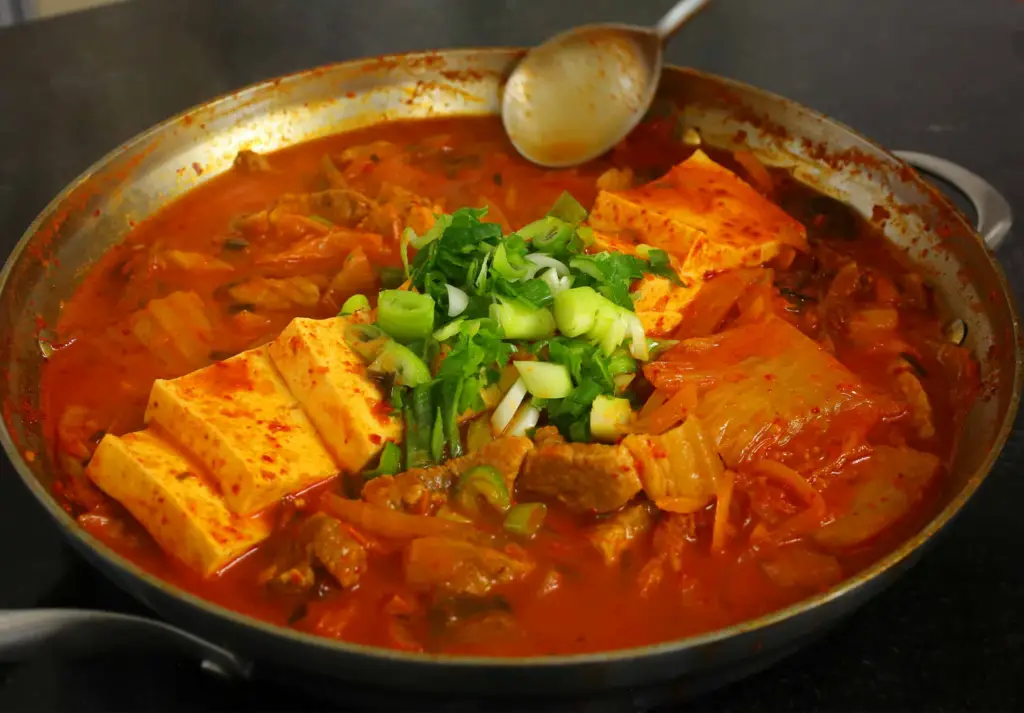
History and Background of Korean Kimchi Tofu Stew
Kimchi Tofu Stew, also known as “Kimchi Sundubu Jjigae” in Korean, is a beloved comfort food originating from Korea. Kimchi, a fermented vegetable dish, has been a staple in Korean cuisine for centuries.
Sundubu Jjigae, a hot and spicy stew made with uncurdled tofu, complements the bold flavors of kimchi. This dish is deeply rooted in Korean home cooking and reflects the nation’s culinary emphasis on balance, using fermented ingredients for a distinctive taste.
Korean Food – Kimchi Ingredients
- 1 block (14 ounces) soft tofu
- 1 cup napa cabbage kimchi, chopped
- 1/2 cup kimchi juice (from the kimchi)
- 1/2 cup thinly sliced pork belly or tofu for a vegetarian option
- 1/4 cup sliced mushrooms
- 1/4 cup sliced onion
- 1 green onion, chopped
- 2 cloves garlic, minced
- 1 tablespoon soy sauce
- 1 tablespoon gochugaru (Korean red pepper flakes)
- 1 tablespoon vegetable oil
- 3 cups vegetable or anchovy broth
- Salt and pepper to taste
Korean Food – Kimchi Recipe
1. Prepare the Ingredients
Ingredients:
- 1 block (14 ounces) soft tofu
- 1 cup napa cabbage kimchi, chopped
- 1/2 cup kimchi juice (from the kimchi)
- 1/2 cup thinly sliced pork belly or tofu for a vegetarian option
- 1/4 cup sliced mushrooms
- 1/4 cup sliced onion
- 1 green onion, chopped
- 2 cloves garlic, minced
- Cut the tofu into small cubes.
- Chop the napa cabbage kimchi into bite-sized pieces.
- Slice the pork belly (or tofu for a vegetarian option), mushrooms, onion, and green onion.
- Mince the garlic.
2. Sauté the Ingredients
Ingredients:
- 1 tablespoon vegetable oil
- Heat vegetable oil in a pot over medium heat.
- Add sliced pork belly (or tofu) and cook until browned.
- Add minced garlic, sliced mushrooms, sliced onion, and chopped kimchi.
- Sauté for 3-5 minutes until vegetables are softened.
3. Season the Stew
Ingredients:
- 1 tablespoon soy sauce
- 1 tablespoon gochugaru (Korean red pepper flakes)
- Add soy sauce and gochugaru to the pot, stirring to combine.
4. Cook the Stew
Ingredients:
- 3 cups vegetable or anchovy broth
- Pour the broth into the pot, including kimchi juice.
- Bring the stew to a simmer and let it cook for 15-20 minutes.
- Season with salt and pepper to taste.
5. Add Tofu and Green Onions
Ingredients:
- 1 block (14 ounces) soft tofu
- 1 green onion, chopped
- Gently add the tofu cubes to the stew.
- Sprinkle chopped green onions over the top.
- Simmer for an additional 5-7 minutes until tofu is heated through.
Serving Size and Cooking Time
- Serving Size: 4 people
- Cooking Time: Approximately 45 minutes
Nutritional Information
- Calories: Approximately 280 calories per serving (Note: Nutritional information may vary based on specific brands and quantities used.)
Korean Food – Instant Pot Sweet & Spicy Brisket

History and Background of Instant Pot Sweet & Spicy Brisket
The Instant Pot Sweet & Spicy Brisket is a modern twist on traditional Korean flavors, merging the convenience of contemporary cooking with the bold tastes of Korean cuisine. Brisket, a cut of beef, is slow-cooked in a rich, sweet, and spicy sauce, embodying the essence of Korean barbecue.
This fusion dish showcases the adaptability of Korean flavors to various cooking methods and has become a popular choice for those seeking a delicious and time-efficient way to enjoy the robust taste of Korean barbecue.
Instant Pot Sweet & Spicy Brisket Ingredients
- 2.5 pounds beef brisket, trimmed
- 1 cup soy sauce
- 1/2 cup brown sugar
- 1/4 cup gochujang (Korean red pepper paste)
- 1/4 cup rice vinegar
- 1/4 cup mirin (sweet rice wine)
- 4 cloves garlic, minced
- 1 tablespoon ginger, grated
- 1 tablespoon sesame oil
- 1 teaspoon black pepper
- 1 onion, thinly sliced
- 1 carrot, sliced
- 2 green onions, chopped
- Sesame seeds for garnish
Instant Pot Sweet & Spicy Brisket Recipe
1. Prepare the Brisket
Ingredients:
- 2.5 pounds beef brisket, trimmed
- Trim excess fat from the brisket.
- Cut the brisket into manageable pieces for easier cooking.
2. Create the Marinade
Ingredients:
- 1 cup soy sauce
- 1/2 cup brown sugar
- 1/4 cup gochujang (Korean red pepper paste)
- 1/4 cup rice vinegar
- 1/4 cup mirin (sweet rice wine)
- 4 cloves garlic, minced
- 1 tablespoon ginger, grated
- 1 tablespoon sesame oil
- 1 teaspoon black pepper
- In a bowl, combine soy sauce, brown sugar, gochujang, rice vinegar, mirin, minced garlic, grated ginger, sesame oil, and black pepper.
- Mix the marinade until the sugar is dissolved.
3. Marinate the Brisket
- Place the brisket pieces in a large bowl or a resealable plastic bag.
- Pour the marinade over the brisket, ensuring all pieces are coated.
- Marinate in the refrigerator for at least 4 hours or preferably overnight.
4. Cook in the Instant Pot
Ingredients:
- 1 onion, thinly sliced
- 1 carrot, sliced
- Place the marinated brisket in the Instant Pot.
- Add sliced onions and carrots on top.
- Close the Instant Pot lid and set it to high pressure for 60 minutes.
5. Serve and Garnish
Ingredients:
- 2 green onions, chopped
- Sesame seeds for garnish
- Once the cooking is complete, release the pressure and open the Instant Pot.
- Transfer the brisket to a serving platter.
- Garnish with chopped green onions and sesame seeds.
Serving Size and Cooking Time
- Serving Size: 6 people
- Cooking Time: Approximately 70 minutes (excluding marinating time)
Nutritional Information
- Calories: Approximately 380 calories per serving (Note: Nutritional information may vary based on specific brands and quantities used.)
Korean Food – Air Fryer Pork Belly

History and Background of Air Fryer Pork Belly
Air Fryer Pork Belly is a contemporary take on a classic Korean dish that traces its origins to the diverse culinary landscape of South Korea. Korean cuisine often emphasizes the combination of sweet and savory flavors, and pork belly, a popular ingredient, is widely enjoyed for its rich taste and tender texture.
The use of an air fryer in this recipe brings a modern twist to the traditional method of cooking pork belly, allowing for a quicker and healthier preparation while maintaining the dish’s authentic Korean essence.
Korean Food – Air Fryer Pork Belly Ingredients
- 1.5 pounds pork belly, thinly sliced
- 1/4 cup soy sauce
- 2 tablespoons honey
- 1 tablespoon gochujang (Korean red pepper paste)
- 1 tablespoon sesame oil
- 1 teaspoon garlic powder
- 1 teaspoon ginger, grated
- 1/2 teaspoon black pepper
- 1 tablespoon cooking oil
- Sesame seeds and chopped green onions for garnish
Korean Food – Air Fryer Pork Belly Recipe
1. Marinate the Pork Belly
Ingredients:
- 1.5 pounds pork belly, thinly sliced
- 1/4 cup soy sauce
- 2 tablespoons honey
- 1 tablespoon gochujang (Korean red pepper paste)
- 1 tablespoon sesame oil
- 1 teaspoon garlic powder
- 1 teaspoon ginger, grated
- 1/2 teaspoon black pepper
- In a bowl, combine soy sauce, honey, gochujang, sesame oil, garlic powder, grated ginger, and black pepper.
- Mix the marinade well.
- Add the thinly sliced pork belly to the marinade, ensuring each piece is coated.
- Marinate in the refrigerator for at least 30 minutes.
2. Preheat the Air Fryer
- Preheat the air fryer to 400°F (200°C) for about 5 minutes.
3. Air Fry the Pork Belly
Ingredients:
- 1 tablespoon cooking oil
- Brush the air fryer basket with cooking oil.
- Place the marinated pork belly slices in a single layer in the air fryer basket, ensuring they are not overcrowded.
- Air fry for 8-10 minutes, flipping halfway through, until the pork belly is crispy and golden brown.
4. Serve and Garnish
Ingredients:
- Sesame seeds and chopped green onions for garnish
- Remove the air-fried pork belly from the air fryer.
- Place the slices on a serving platter.
- Garnish with sesame seeds and chopped green onions.
Serving Size and Cooking Time
- Serving Size: 4 people
- Cooking Time: Approximately 45 minutes (including marinating time)
Nutritional Information
- Calories: Approximately 320 calories per serving (Note: Nutritional information may vary based on specific brands and quantities used.)
Korean Food – Dakgangjeong (Korean Chicken Nuggets)

History and Background of Dakgangjeong (Korean Chicken Nuggets)
Dakgangjeong, often dubbed as Korean Chicken Nuggets, is a popular dish deeply rooted in Korean culinary traditions. Originating from the Korean Royal Court cuisine, this sweet and crispy chicken dish has evolved over the years to become a beloved street food and a staple at Korean fried chicken establishments.
Dakgangjeong typically features bite-sized pieces of chicken, coated in a flavorful sauce that strikes a delightful balance between sweet and savory, delivering a satisfying crunch with each bite.
Korean Food – Dakgangjeong Ingredients
- 1 pound boneless, skinless chicken thighs, cut into bite-sized pieces
- 1 cup potato starch or cornstarch
- 1 cup frying oil (for deep frying)
- 2 tablespoons toasted sesame seeds (for garnish)
Sauce:
- 1/2 cup soy sauce
- 1/4 cup honey
- 2 tablespoons rice vinegar
- 1 tablespoon mirin (sweet rice wine)
- 1 tablespoon minced garlic
- 1 teaspoon grated ginger
- 1 teaspoon sesame oil
- 1/2 teaspoon red pepper flakes (optional for spice)
Korean Food – Dakgangjeong Recipe
1. Prepare the Chicken
Ingredients:
- 1 pound boneless, skinless chicken thighs, cut into bite-sized pieces
- 1 cup potato starch or cornstarch
- Coat the chicken pieces evenly with potato starch or cornstarch, shaking off any excess.
2. Deep Fry the Chicken
Ingredients:
- 1 cup frying oil (for deep frying)
- Heat frying oil in a deep pan or pot to 350°F (175°C).
- Fry the coated chicken pieces in batches until golden brown and crispy, approximately 5-7 minutes per batch.
- Remove the fried chicken and place them on a paper towel-lined plate to absorb excess oil.
3. Prepare the Sauce
Ingredients:
- 1/2 cup soy sauce
- 1/4 cup honey
- 2 tablespoons rice vinegar
- 1 tablespoon mirin (sweet rice wine)
- 1 tablespoon minced garlic
- 1 teaspoon grated ginger
- 1 teaspoon sesame oil
- 1/2 teaspoon red pepper flakes (optional for spice)
- In a saucepan over medium heat, combine soy sauce, honey, rice vinegar, mirin, minced garlic, grated ginger, sesame oil, and red pepper flakes.
- Stir the sauce until it thickens, forming a glossy consistency.
4. Coat the Chicken in the Sauce
- Toss the fried chicken in the prepared sauce until each piece is well-coated.
5. Garnish and Serve
Ingredients:
- 2 tablespoons toasted sesame seeds (for garnish)
- Transfer the coated chicken to a serving plate.
- Sprinkle toasted sesame seeds over the top for garnish.
- Serve immediately.
Serving Size and Cooking Time
- Serving Size: 4 people
- Cooking Time: Approximately 30 minutes
Nutritional Information
- Calories: Approximately 320 calories per serving (Note: Nutritional information may vary based on specific brands and quantities used.)
Korean Food – Bossam (Korean Pork Belly Wraps)

History and Background of Bossam (Korean Pork Belly Wraps)
Bossam, a flavorful and communal dish, has its roots in Korean cuisine, known for its diversity and bold flavors. Originating from the Joseon Dynasty, Bossam has been a popular choice for celebratory occasions and gatherings.
The dish involves slow-cooking pork belly until tender, serving it with an array of condiments, and wrapping it in fresh, crisp lettuce leaves. This interactive and social eating experience has made Bossam a beloved part of Korean dining culture, enjoyed by families and friends alike.
Korean Food – Bossam Ingredients
Pork:
- 2 pounds pork belly, skin-on
- 1/4 cup Korean coarse sea salt
Broth:
- 4 cups water
- 1 onion, quartered
- 4 garlic cloves, smashed
- 2 green onions, cut into thirds
- 1 thumb-sized ginger piece, sliced
Serving:
- Fresh lettuce leaves
- Kimchi
- Fermented shrimp sauce (Ssamjang)
- Thinly sliced garlic
- Sliced green onions
- Cooked white rice
Korean Food – Bossam Recipe
1. Prepare the Pork
Ingredients:
- 2 pounds pork belly, skin-on
- 1/4 cup Korean coarse sea salt
- Rub the pork belly with Korean coarse sea salt, ensuring even coverage.
- Let it sit for at least 30 minutes to allow the salt to penetrate.
2. Boil the Pork
Ingredients:
- 4 cups water
- 1 onion, quartered
- 4 garlic cloves, smashed
- 2 green onions, cut into thirds
- 1 thumb-sized ginger piece, sliced
- In a large pot, combine water, quartered onion, smashed garlic cloves, cut green onions, and sliced ginger.
- Add the salted pork belly to the pot and bring it to a boil.
- Reduce heat to a simmer and cook for 1.5 to 2 hours until the pork is tender.
3. Slice and Serve
- Remove the pork belly from the pot and let it cool slightly.
- Slice the pork belly into thin pieces.
4. Prepare Condiments
Ingredients:
- Fresh lettuce leaves
- Kimchi
- Fermented shrimp sauce (Ssamjang)
- Thinly sliced garlic
- Sliced green onions
- Cooked white rice
- Set up a serving platter with fresh lettuce leaves for wrapping.
- Arrange sliced pork belly, kimchi, fermented shrimp sauce (Ssamjang), thinly sliced garlic, sliced green onions, and cooked white rice on the side.
5. Assemble and Enjoy
- To eat, take a lettuce leaf, add a slice of pork belly, a dollop of fermented shrimp sauce, and your choice of condiments.
- Wrap it up and enjoy the flavorful combination.
Serving Size and Cooking Time
- Serving Size: 4 people
- Cooking Time: Approximately 2 hours
Nutritional Information
- Calories: Approximately 400 calories per serving (Note: Nutritional information may vary based on specific brands and quantities used.)
Korean Food – Homemade Mandu (Korean Dumplings)

History and Background of Homemade Mandu (Korean Dumplings)
Homemade Mandu, or Korean dumplings, have been a cherished part of Korean cuisine for centuries. Originating from the era of the Three Kingdoms, these dumplings have evolved over time, reflecting the rich cultural and historical influences on Korean food.
Mandu is often enjoyed during festive occasions and celebrations, symbolizing prosperity and togetherness. These versatile dumplings come in various forms, stuffed with a delightful mixture of ingredients, and are commonly prepared and shared among family and friends.
Korean Food – Homemade Mandu Ingredients
Filling:
- 1 pound ground pork
- 1 cup firm tofu, drained and crumbled
- 1 cup napa cabbage, finely chopped
- 1 cup Korean glass noodles, soaked and chopped
- 1/2 cup shiitake mushrooms, finely chopped
- 1/4 cup soy sauce
- 2 tablespoons sesame oil
- 1 tablespoon mirin (sweet rice wine)
- 1 tablespoon sugar
- 1 teaspoon minced garlic
- 1 teaspoon grated ginger
- Salt and pepper to taste
Dough:
- 1 package round dumpling wrappers
- Water for sealing
Korean Food – Homemade Mandu Recipe
1. Prepare the Filling
Ingredients:
- 1 pound ground pork
- 1 cup firm tofu, drained and crumbled
- 1 cup napa cabbage, finely chopped
- 1 cup Korean glass noodles, soaked and chopped
- 1/2 cup shiitake mushrooms, finely chopped
- 1/4 cup soy sauce
- 2 tablespoons sesame oil
- 1 tablespoon mirin (sweet rice wine)
- 1 tablespoon sugar
- 1 teaspoon minced garlic
- 1 teaspoon grated ginger
- Salt and pepper to taste
- In a large bowl, combine ground pork, crumbled tofu, chopped napa cabbage, soaked and chopped glass noodles, chopped shiitake mushrooms, soy sauce, sesame oil, mirin, sugar, minced garlic, grated ginger, salt, and pepper.
- Mix the filling thoroughly until well combined.
2. Assemble the Dumplings
Ingredients:
- 1 package round dumpling wrappers
- Water for sealing
- Place a small amount of the filling in the center of a dumpling wrapper.
- Moisten the edges of the wrapper with water using your fingertip.
- Fold the wrapper in half, sealing the edges and creating a half-moon shape.
- Press the edges firmly to ensure a tight seal.
3. Cook the Mandu
- Boiling Method:
- Bring a pot of water to a boil.
- Add the mandu to the boiling water and cook until they float to the surface, approximately 5-7 minutes.
- Steaming Method:
- Arrange the mandu on a steamer basket and steam for about 15-20 minutes until cooked through.
- Pan-Frying Method:
- Heat a pan with oil over medium-high heat.
- Place the mandu in the pan, ensuring they have enough space between each other.
- Cook until the bottoms are golden brown, then add water to the pan, cover, and steam until the water evaporates.
4. Serve and Enjoy
- Transfer the cooked mandu to a serving plate.
- Serve with dipping sauce or enjoy them as is.
Serving Size and Cooking Time
- Serving Size: 4-6 people
- Cooking Time: Approximately 30-40 minutes
Nutritional Information
- Calories: Approximately 200 calories per 6-piece serving (Note: Nutritional information may vary based on specific brands and quantities used.)
Korean Food – Haemul Pajeon (Seafood Scallion Pancakes)

Origins: A classic Korean pancake with a seafood twist.
Occasions: Ideal for family dinners or celebratory gatherings.
Korean Food – Haemul Pajeon Ingredients
- All-purpose flour
- Water
- Egg
- Scallions
- Seafood mix (shrimp, squid, and/or mussels)
- Soy dipping sauce
Korean Food – Haemul Pajeon How to Prepare
- Combine flour, water, and egg to make a batter.
- Mix in chopped scallions and seafood.
- Pan-fry until crispy and golden brown.
- Serve with soy dipping sauce.
Presentation: Cut into slices and arrange on a plate.
Serving Suggestion: Dip in soy sauce for an extra burst of flavor.
Korea’s National Dish – Bibimbap

Origins: Bibimbap, meaning “mixed rice,” originated in the Joseon Dynasty.
Occasions: Enjoyed year-round, often served during festive occasions.
Ingredients:
- Cooked rice
- Assorted vegetables (spinach, carrots, bean sprouts, shiitake mushrooms)
- Bulgogi (marinated beef)
- Gochujang (red chili paste)
- Fried egg
How to Prepare:
- Arrange cooked rice in a bowl.
- Add sautéed vegetables, bulgogi, and a fried egg on top.
- Mix with gochujang for a burst of flavor.
Presentation: Serve in a traditional stone bowl for an authentic touch.
Serving Suggestion: Mix all ingredients before eating for a harmonious blend of flavors.
Korean Food – Bulgogi (Marinated Grilled Beef)

Origins: Traces back to the Goguryeo era, becoming popular during the Joseon Dynasty.
Occasions: Often enjoyed during family gatherings and celebrations.
Korean Food – Bulgogi Ingredients
- Thinly sliced beef (ribeye or sirloin)
- Soy sauce
- Sugar
- Sesame oil
- Garlic
- Pear (for sweetness)
- Black pepper
Korean Food – Bulgogi How to Prepare
- Marinate beef in a mixture of soy sauce, sugar, sesame oil, minced garlic, grated pear, and black pepper.
- Grill until cooked to desired doneness.
Presentation: Arrange on a platter, garnished with sesame seeds and sliced green onions.
Serving Suggestion: Wrap in lettuce leaves with rice for a flavorful bite.
Korean Food – Japchae (Stir-Fried Glass Noodles)

Origins: Originating from the Joseon Dynasty, it has evolved into a beloved dish.
Occasions: A popular choice for festive occasions and celebrations.
Korean Food – Japchae Ingredients
- Sweet potato glass noodles
- Beef (strips)
- Soy sauce
- Sesame oil
- Vegetables (spinach, carrots, mushrooms)
- Garlic
- Sugar
- Sesame seeds
Korean Food – Japchae How to Prepare
- Cook noodles and stir-fry with soy sauce, sesame oil, and sugar.
- Sauté beef and vegetables separately, then combine.
- Garnish with sesame seeds.
Presentation: Serve on a platter, showcasing the vibrant colors.
Serving Suggestion: Enjoy as a side dish or a light main course.
Korean Desserts: Bingsu (Shaved Ice Dessert)

Origins: Evolved from traditional ice desserts, gaining popularity in the modern era.
Occasions: A refreshing treat during hot summer months.
Korean Desserts: Bingsu Ingredients
- Shaved ice
- Sweetened red beans
- Condensed milk
- Fruit toppings (strawberries, mango, or other seasonal fruits)
- Tteok (rice cake)
Korean Desserts: Bingsu How to Prepare
- Shave ice finely using a machine.
- Arrange sweetened red beans, fruit toppings, and tteok on top.
- Drizzle with condensed milk.
Presentation: Serve in a large bowl, garnished with colorful fruits.
Serving Suggestion: Share with friends and enjoy on a sunny day.
Korean Desserts: Yakgwa (Honey Cookies)

Origins: Traces back to the Goryeo Dynasty, known for its use in ancestral rituals.
Occasions: Traditionally prepared for celebrations and festivals.
Korean Desserts: Yakgwa Ingredients
- Wheat flour
- Honey
- Sesame oil
- Ginger juice
- Pine nuts
Korean Desserts: Yakgwa How to Prepare
- Mix wheat flour, honey, sesame oil, and ginger juice to form a dough.
- Roll out and cut into desired shapes.
- Deep-fry until golden brown.
- Garnish with pine nuts.
Presentation: Arrange on a plate, showcasing the intricate shapes.
Serving Suggestion: Pair with tea for a delightful treat.
Conclusion
Korean cuisine, with its rich history, diverse flavors, and cultural significance, is a culinary journey worth exploring. From savory delights like Bibimbap and Bulgogi to sweet treats like Bingsu and Yakgwa, Korean dishes offer a symphony of tastes.
As you embark on this gastronomic adventure, savor the essence of Korea through its unique ingredients, traditional recipes, and the warmth of shared meals.
FAQ’s
What makes Korean cuisine unique?
Korean cuisine stands out for its harmonious blend of flavors, emphasis on fermentation, communal dining, and iconic dishes like kimchi and BBQ.
Is Korean food always spicy?
While Korean cuisine is known for its spicy elements, not all dishes are excessively hot. Many offer a balanced mix of sweet, savory, and umami flavors.
What is the significance of kimchi in Korean cuisine?
Kimchi is a staple in Korean cuisine, symbolizing the country’s identity. It’s a fermented dish made with vegetables, usually cabbage, and is enjoyed with almost every meal.
Why is communal dining important in Korean culture?
Communal dining is a significant aspect of Korean culture, fostering social connections and emphasizing the sharing of food as a form of bonding and celebration.
Are there vegetarian options in Korean cuisine?
Yes, Korean cuisine offers a variety of vegetarian options, with dishes like Bibimbap and Japchae easily adaptable by substituting meat with tofu or vegetables.
What role does rice play in Korean cuisine?
Rice is a staple in Korean cuisine, served with almost every meal. It plays a central role in the diet, complementing various banchan (side dishes) and main courses.
How do Korean culinary traditions impact modern dining?
Korean culinary traditions, rooted in respect for ingredients and balance, continue to influence modern dining by promoting a holistic approach to food preparation and consumption.

